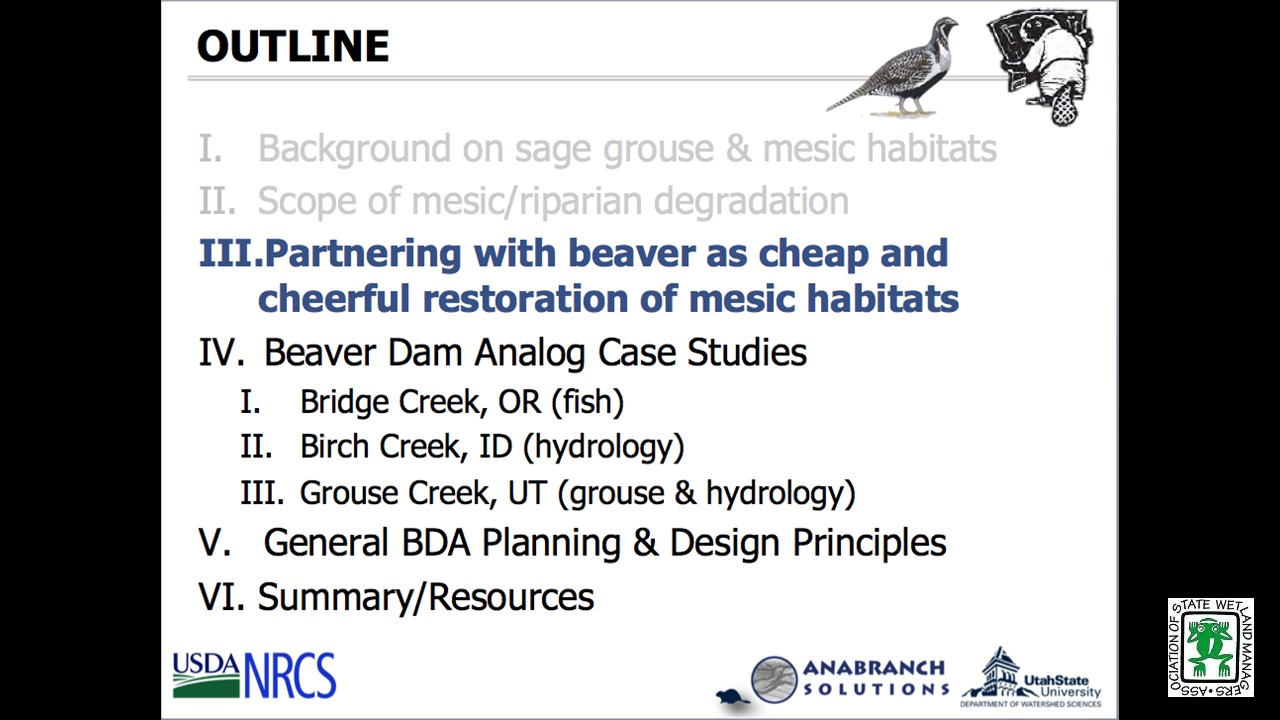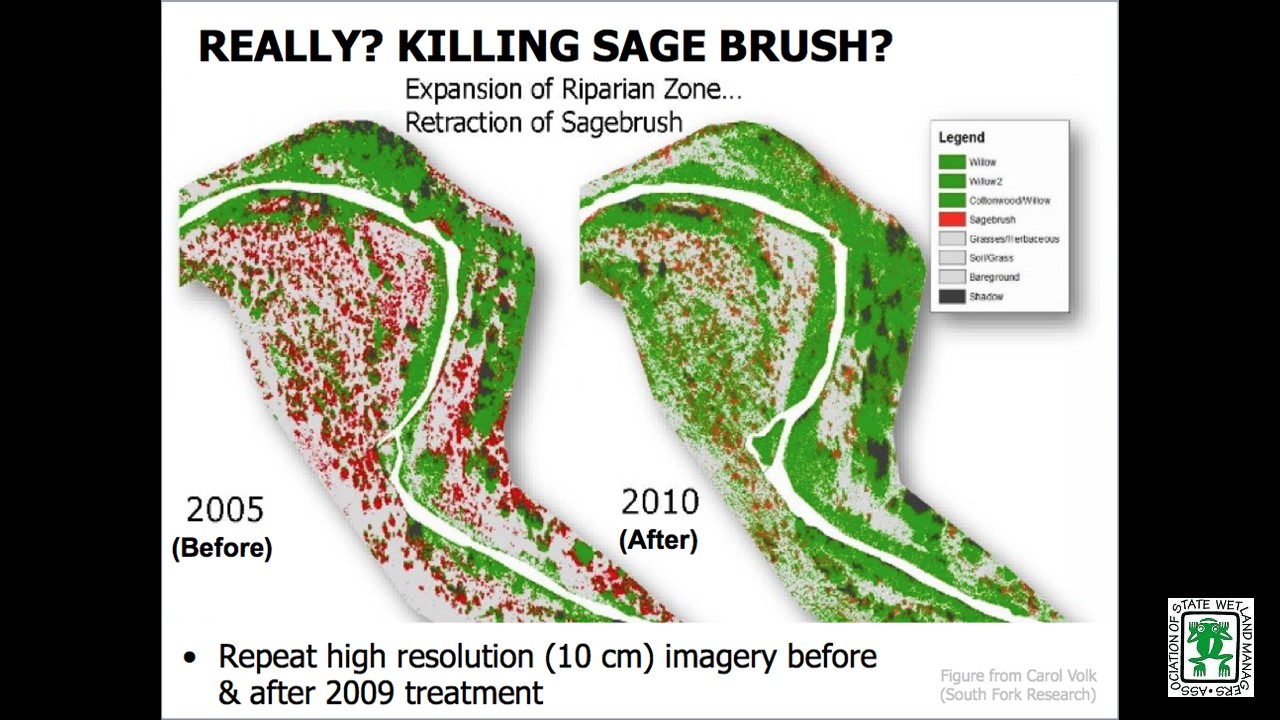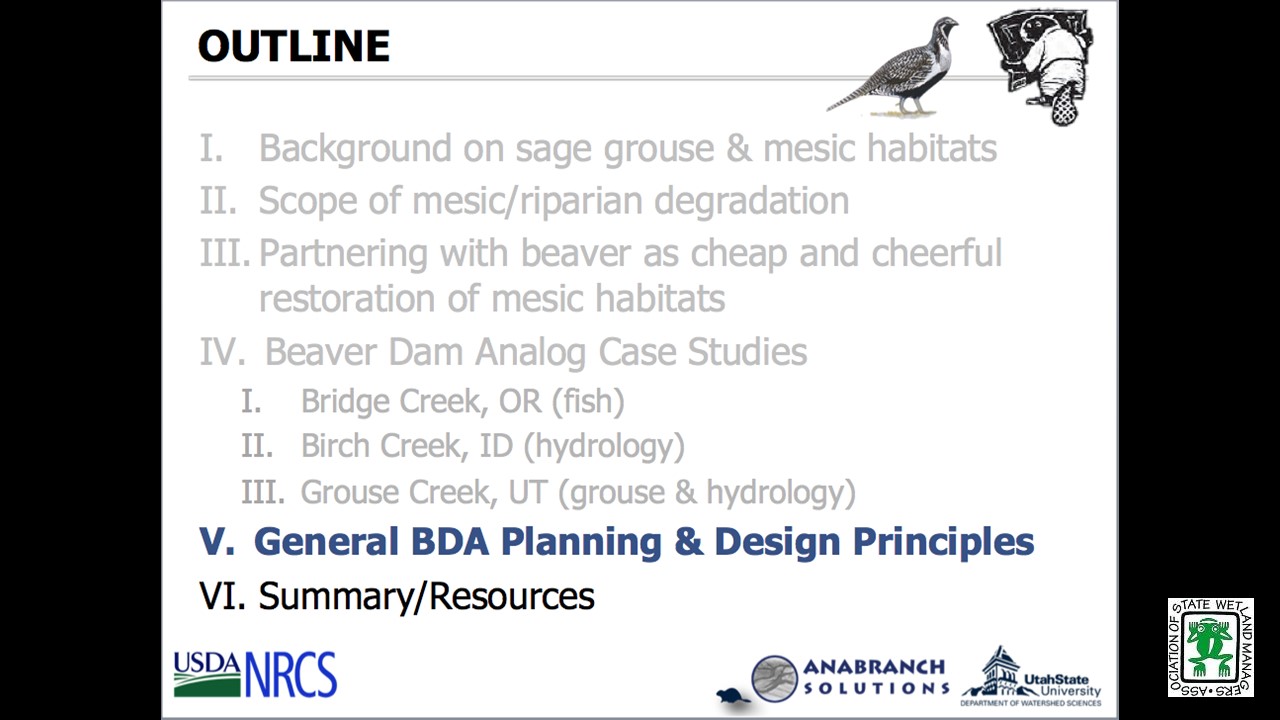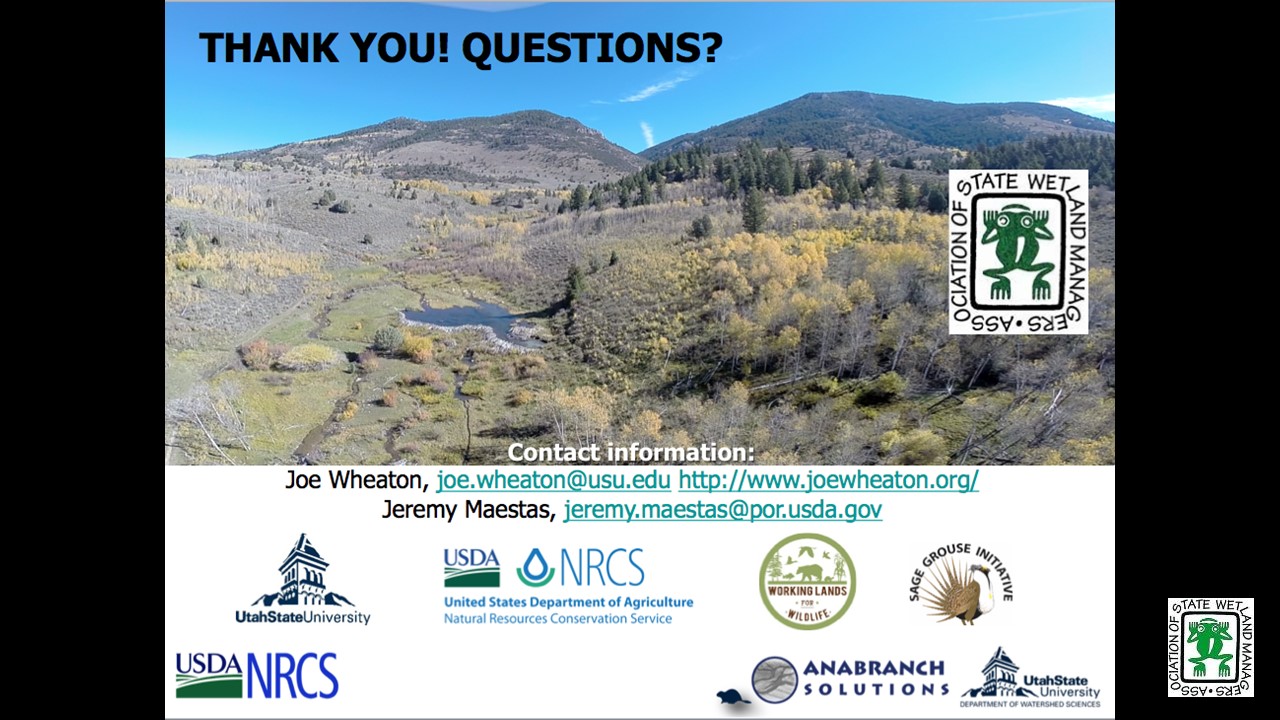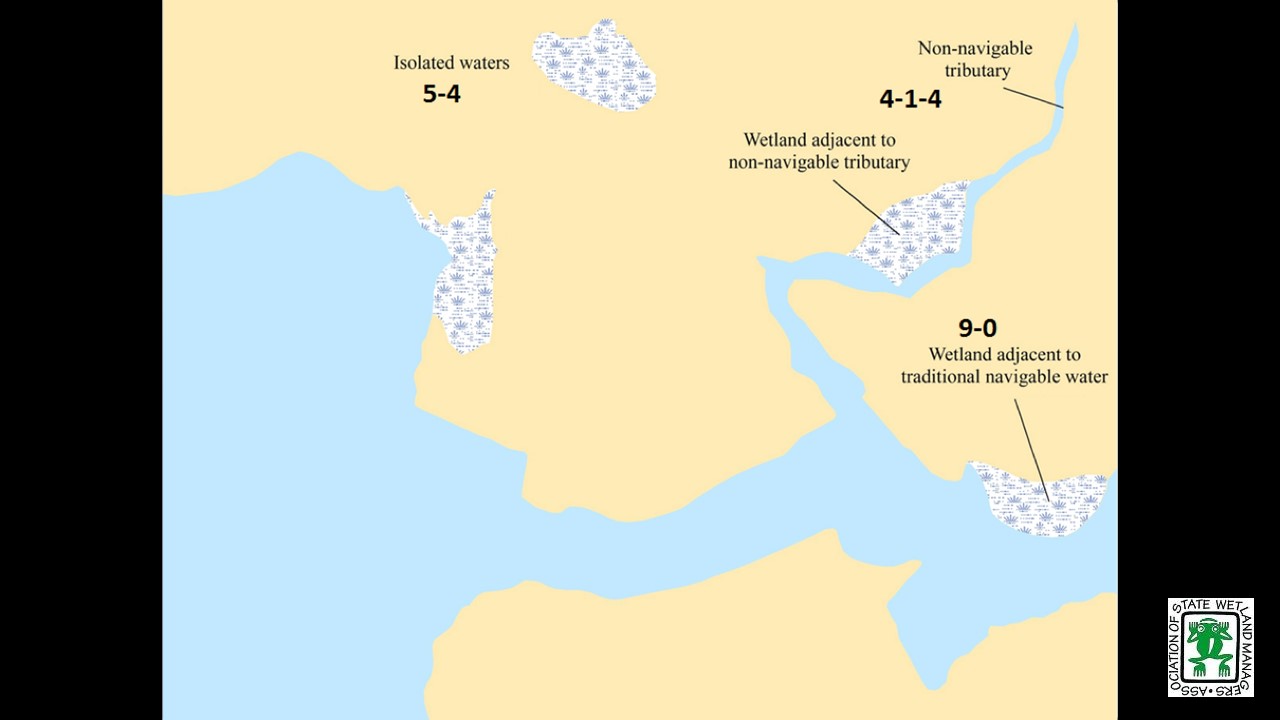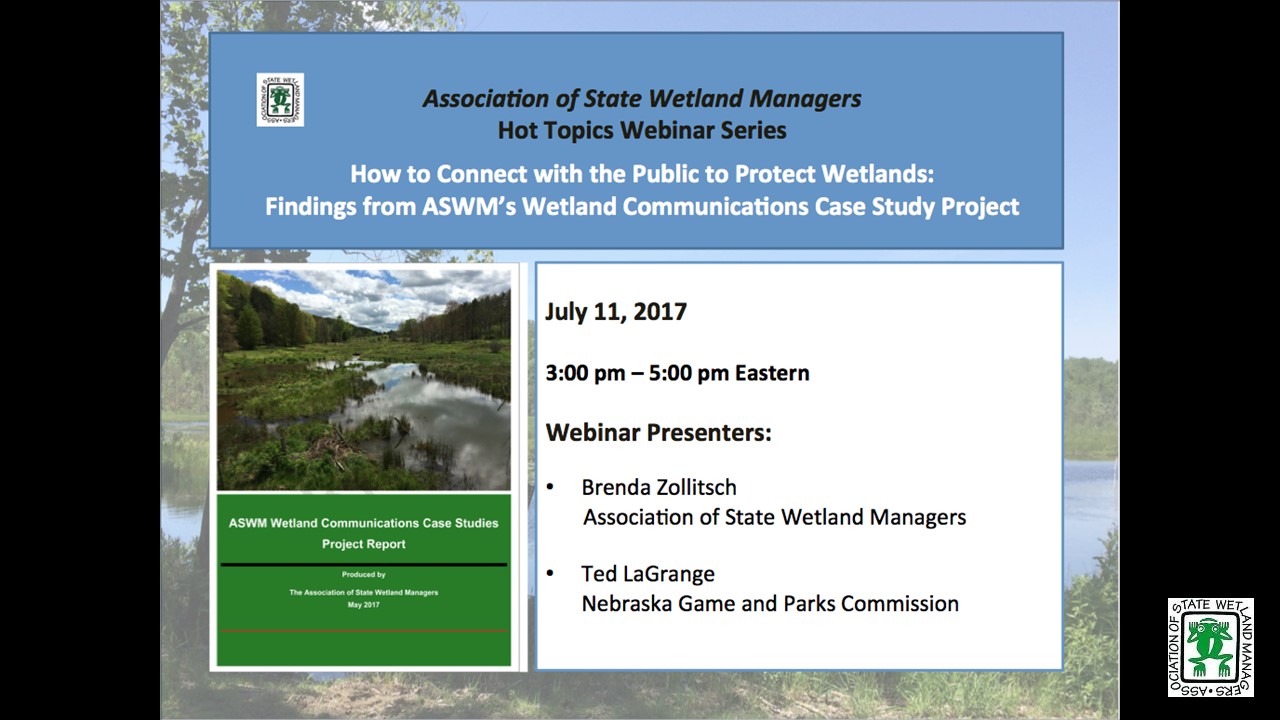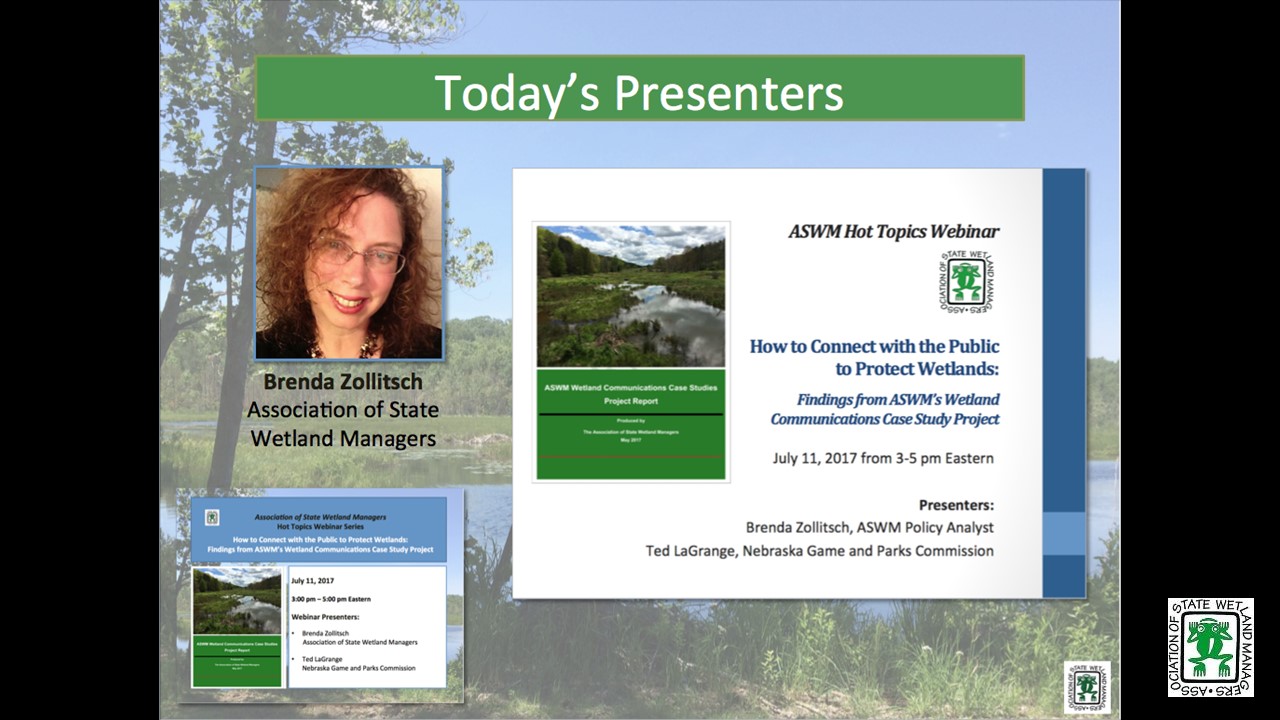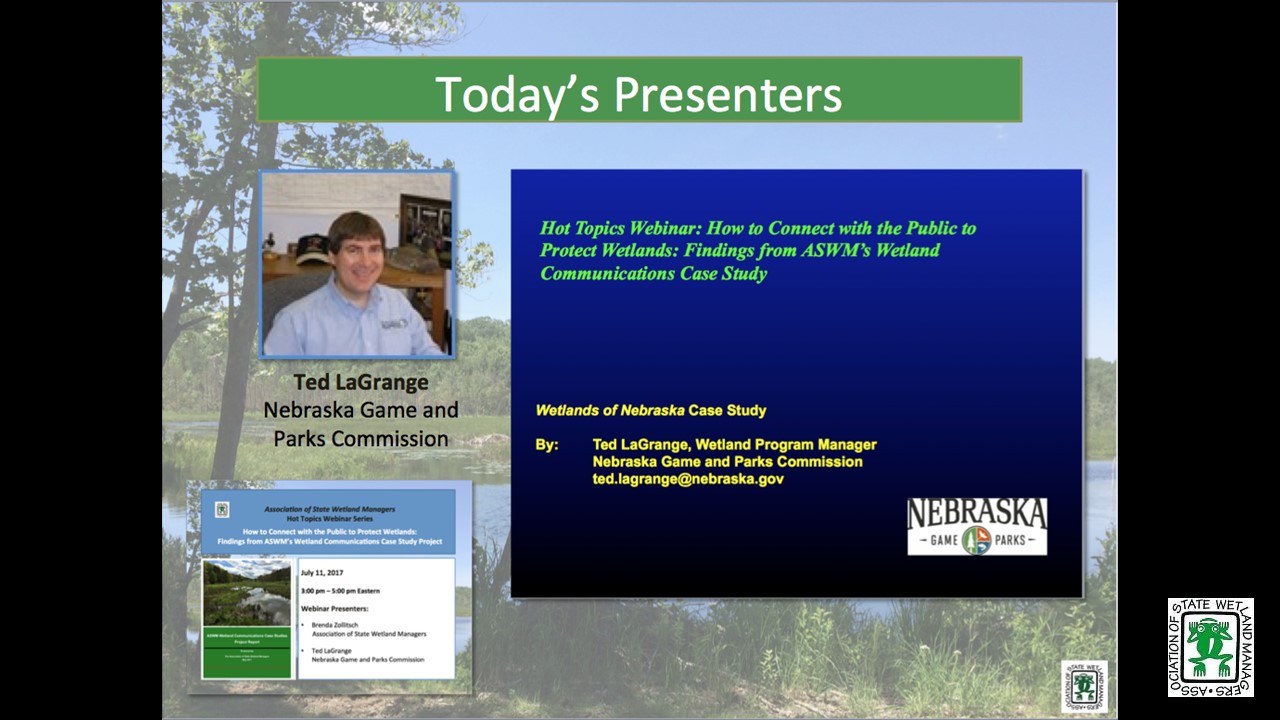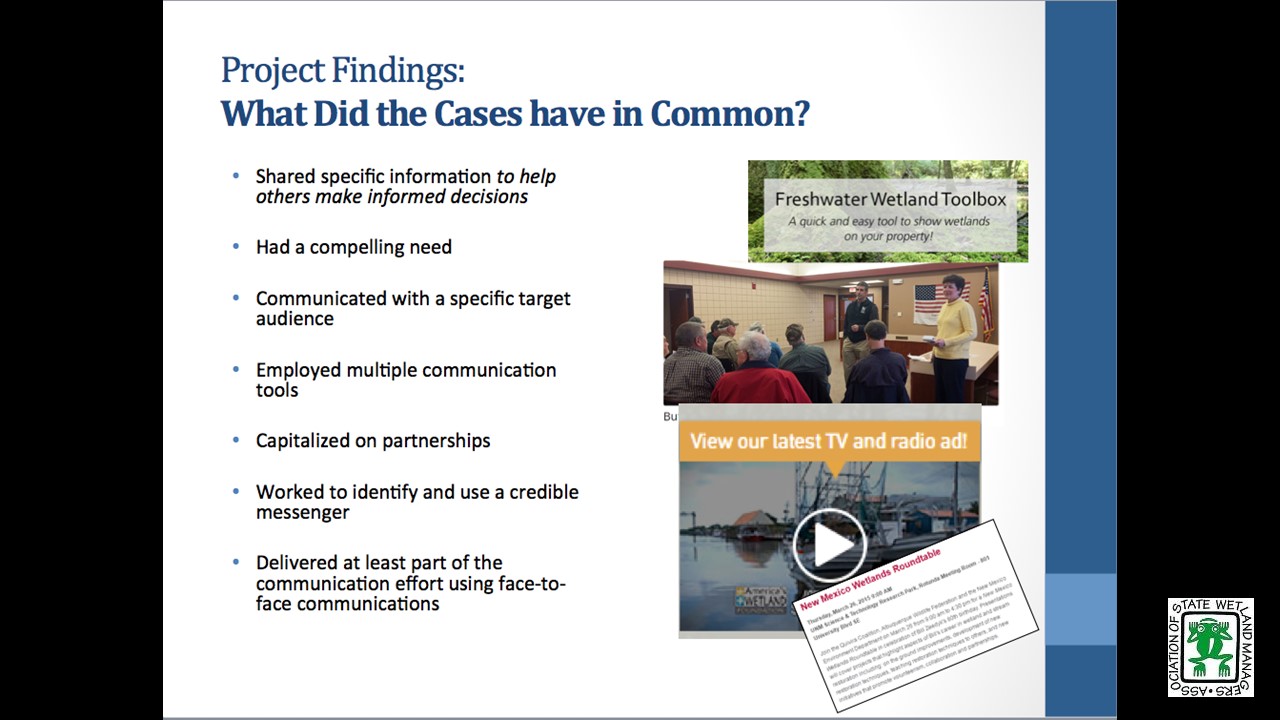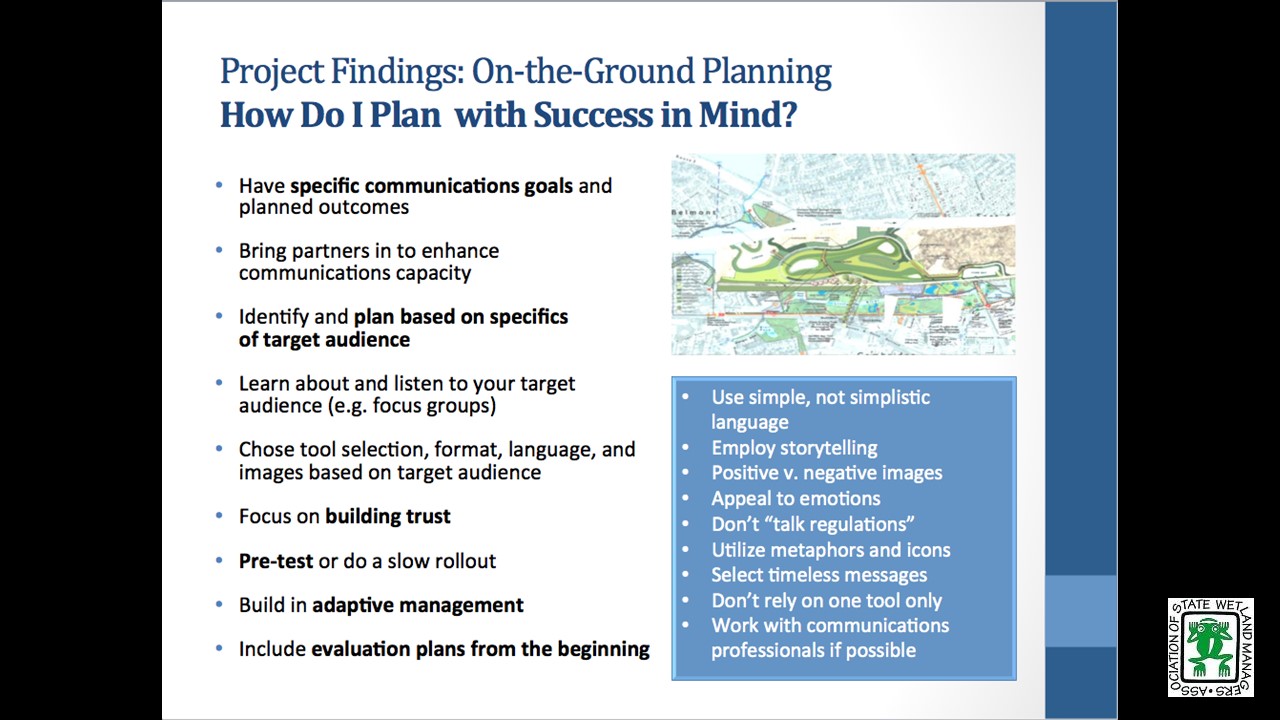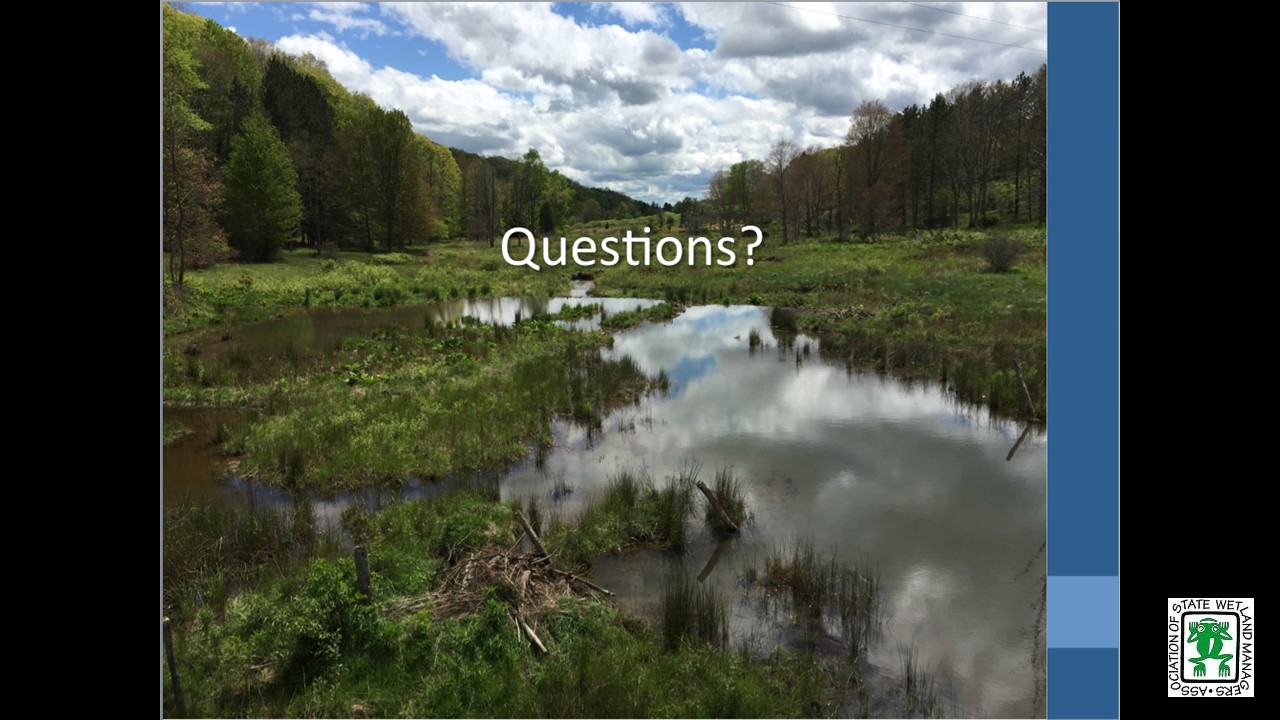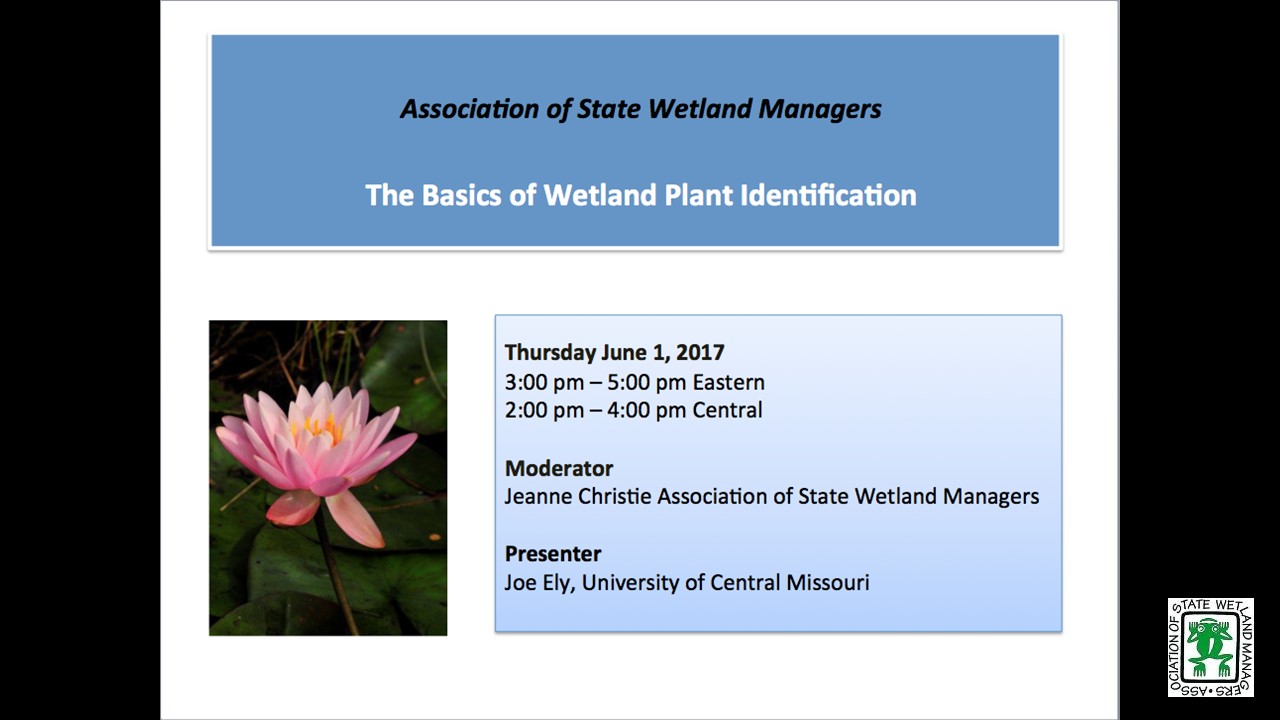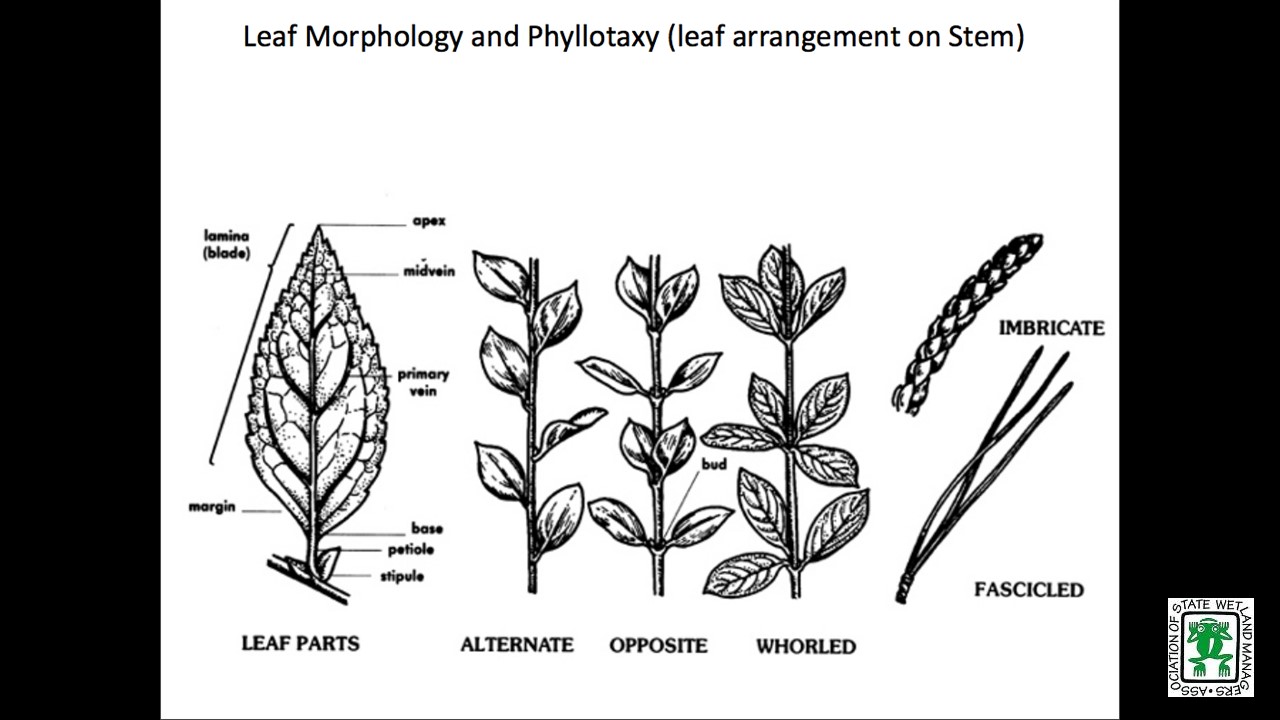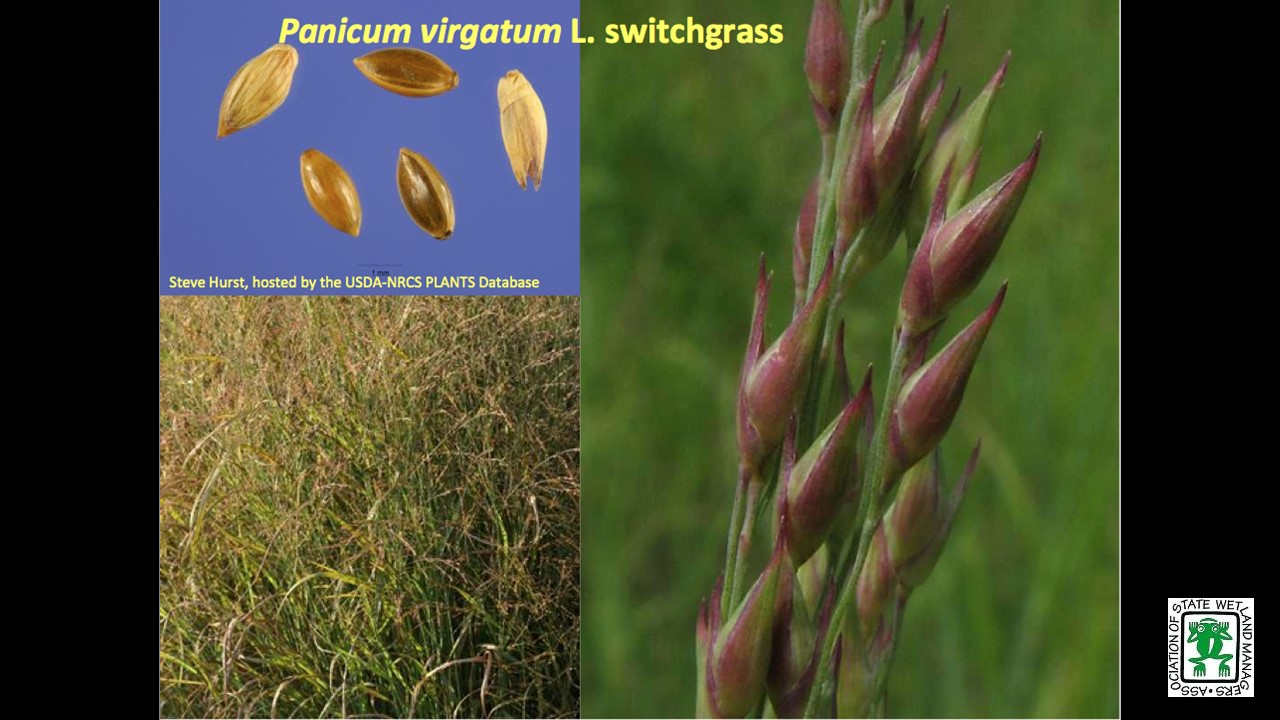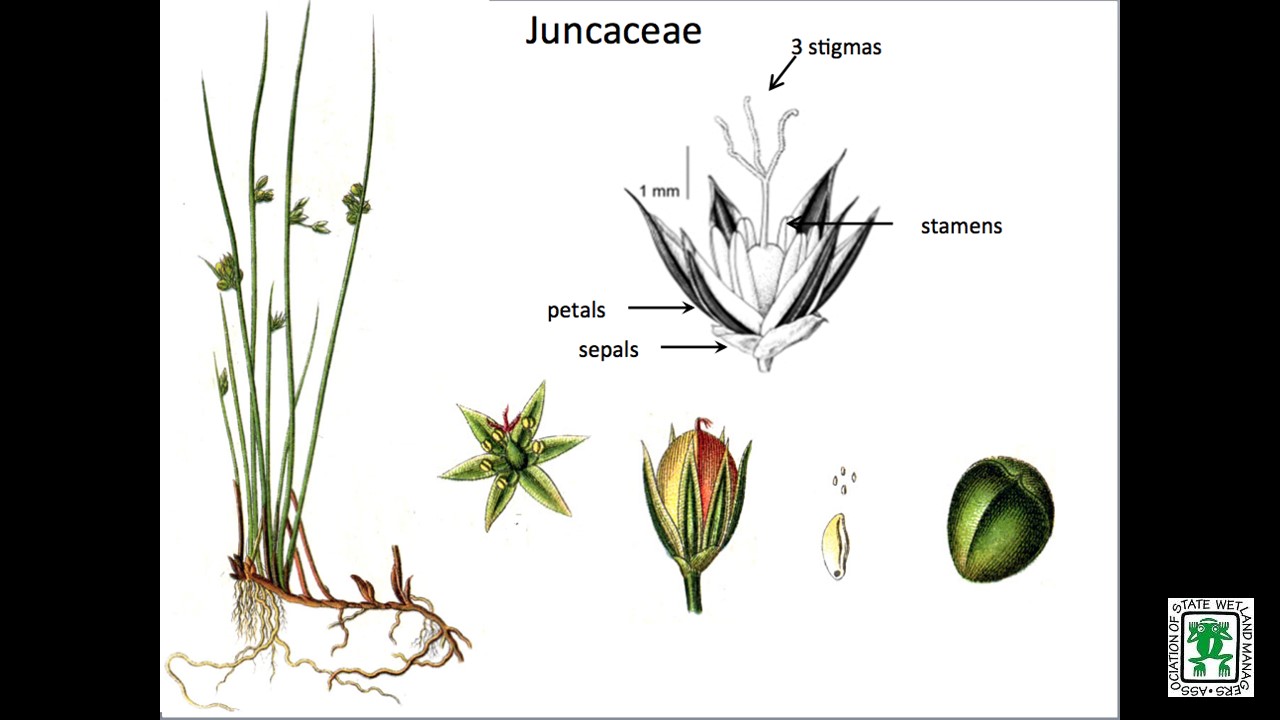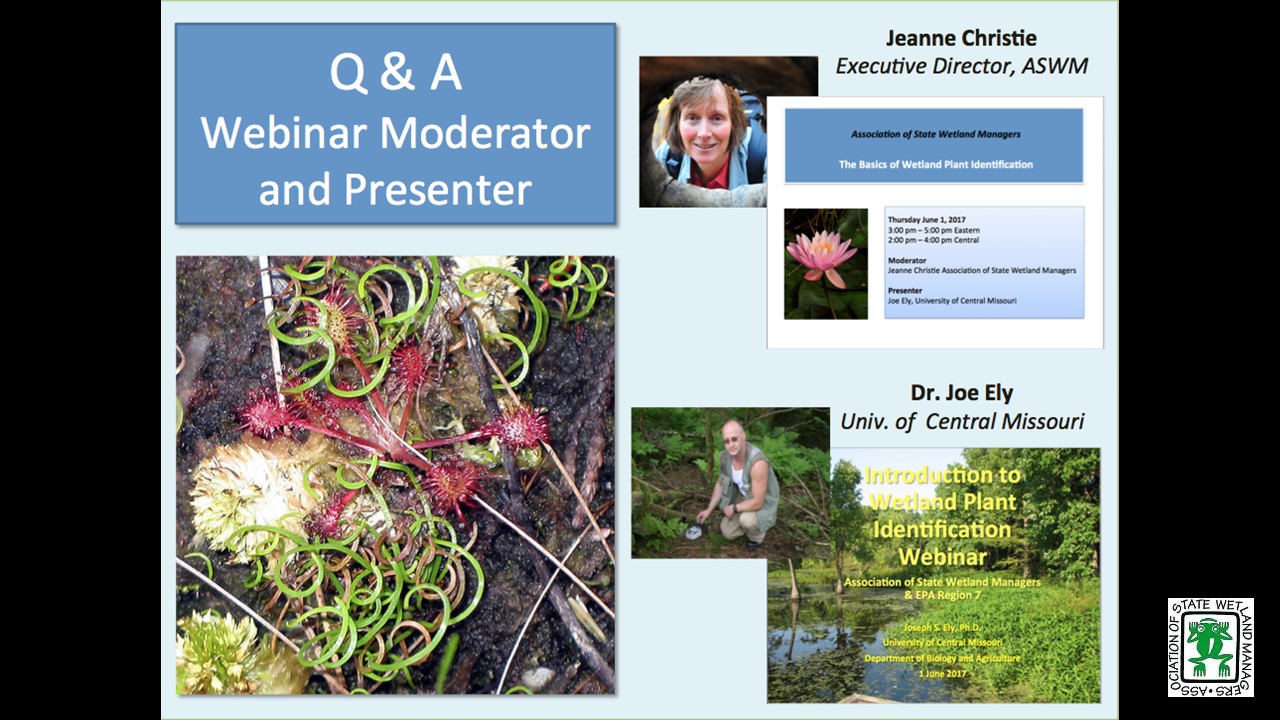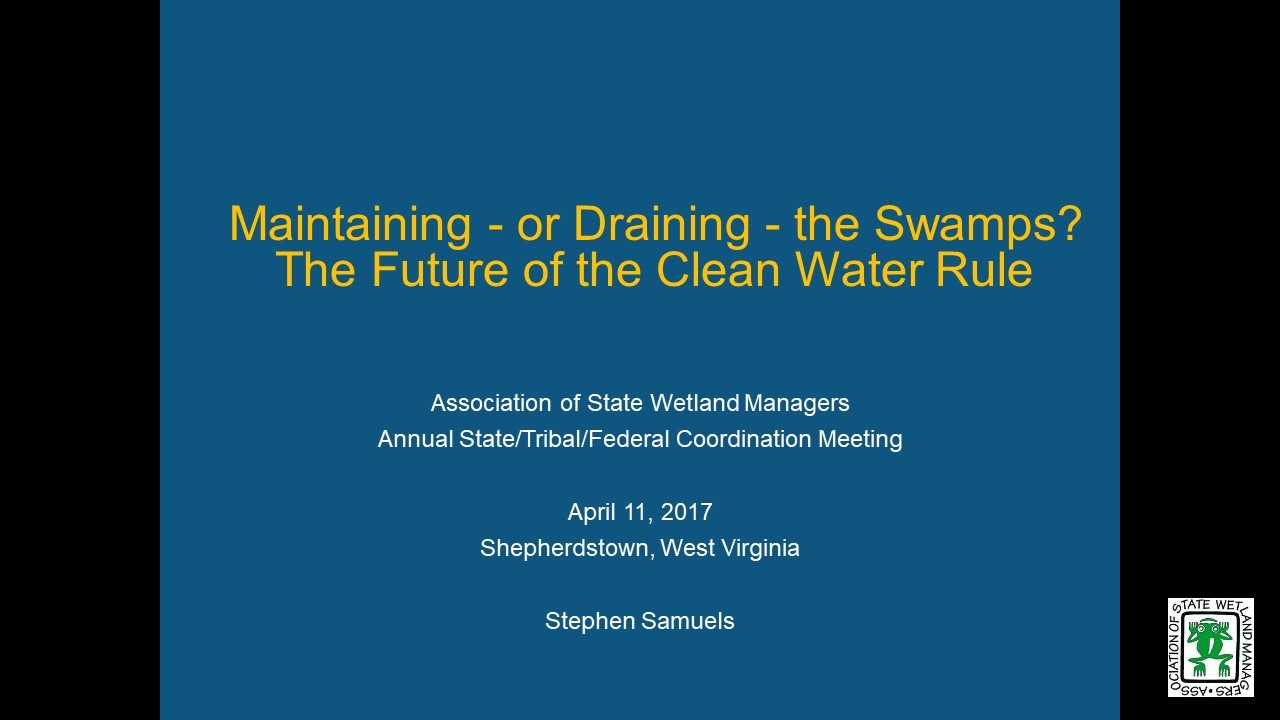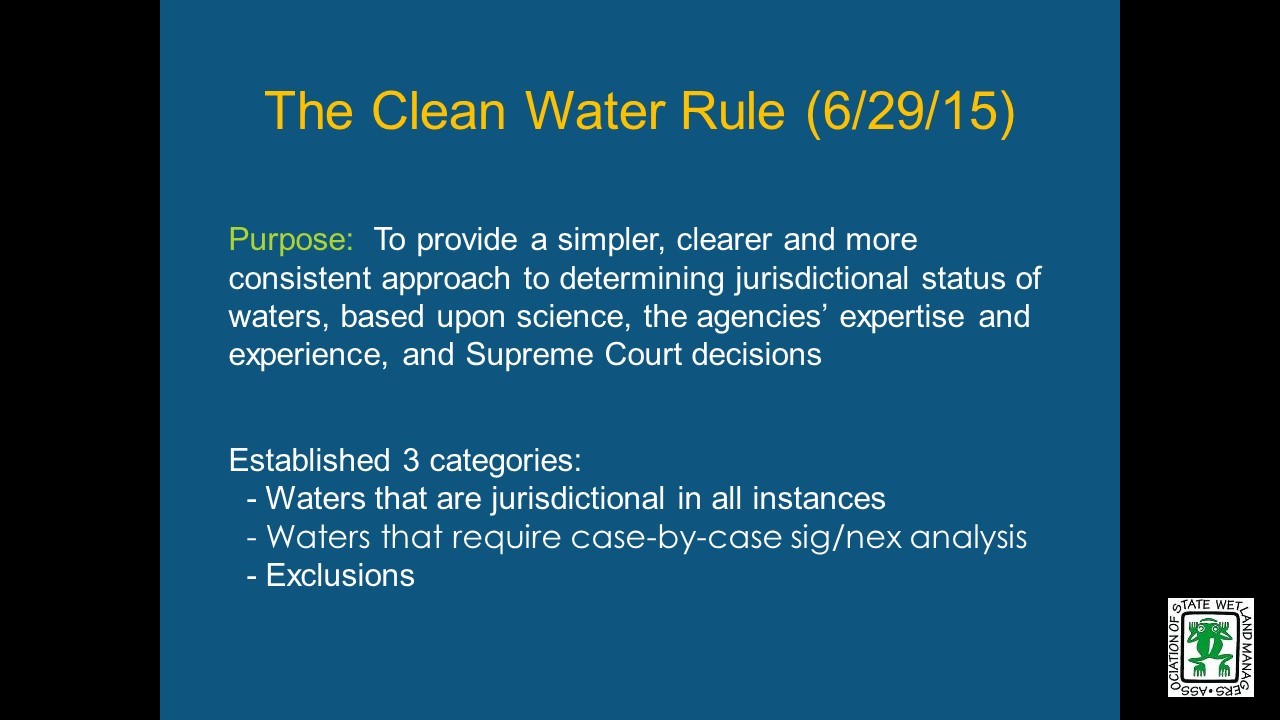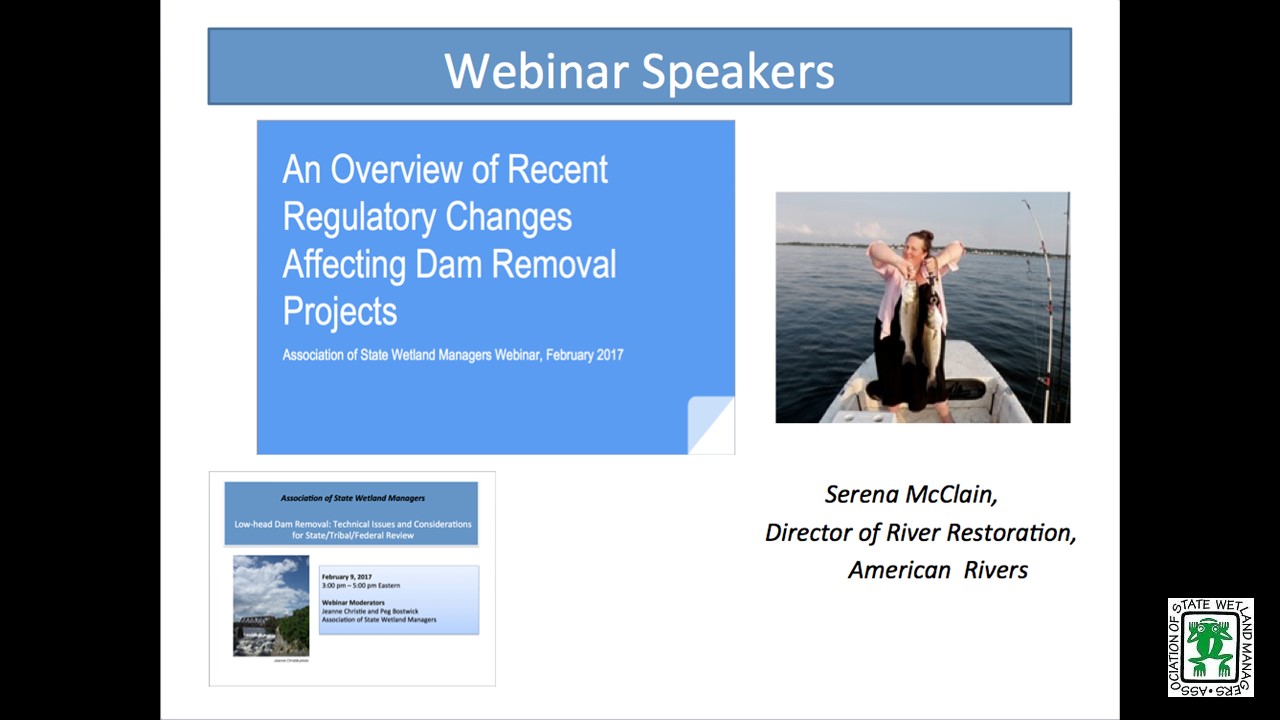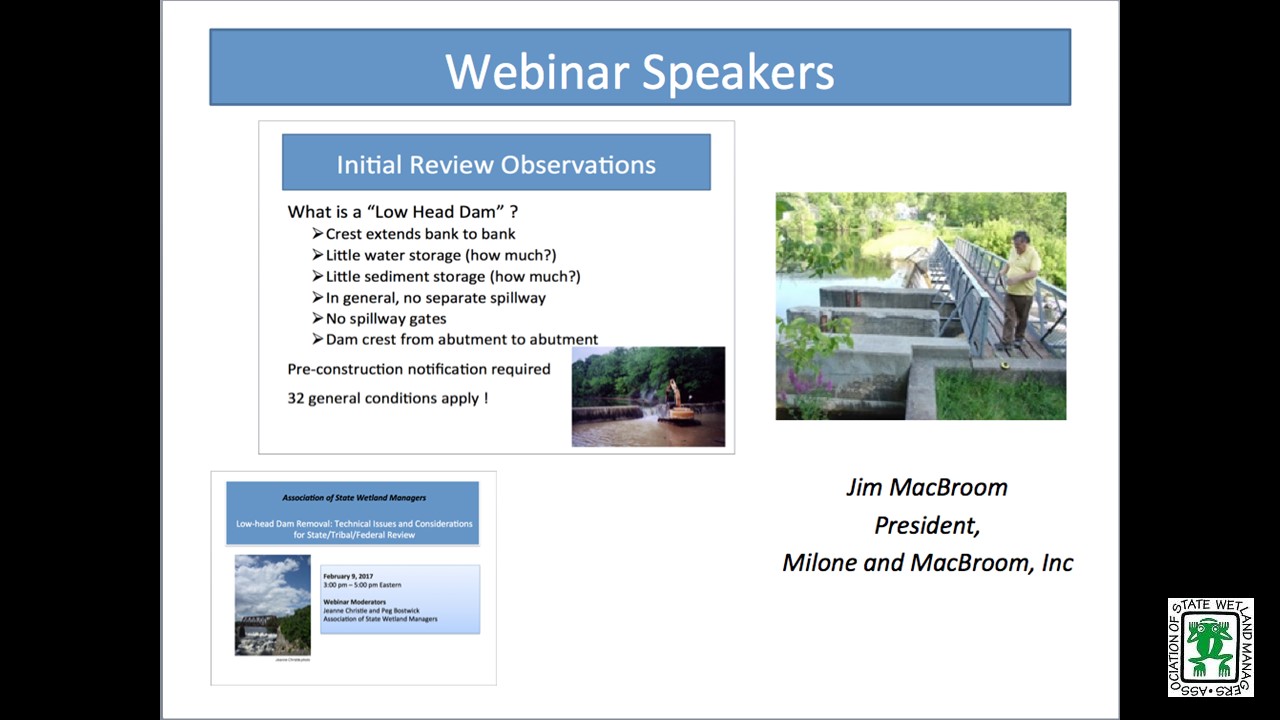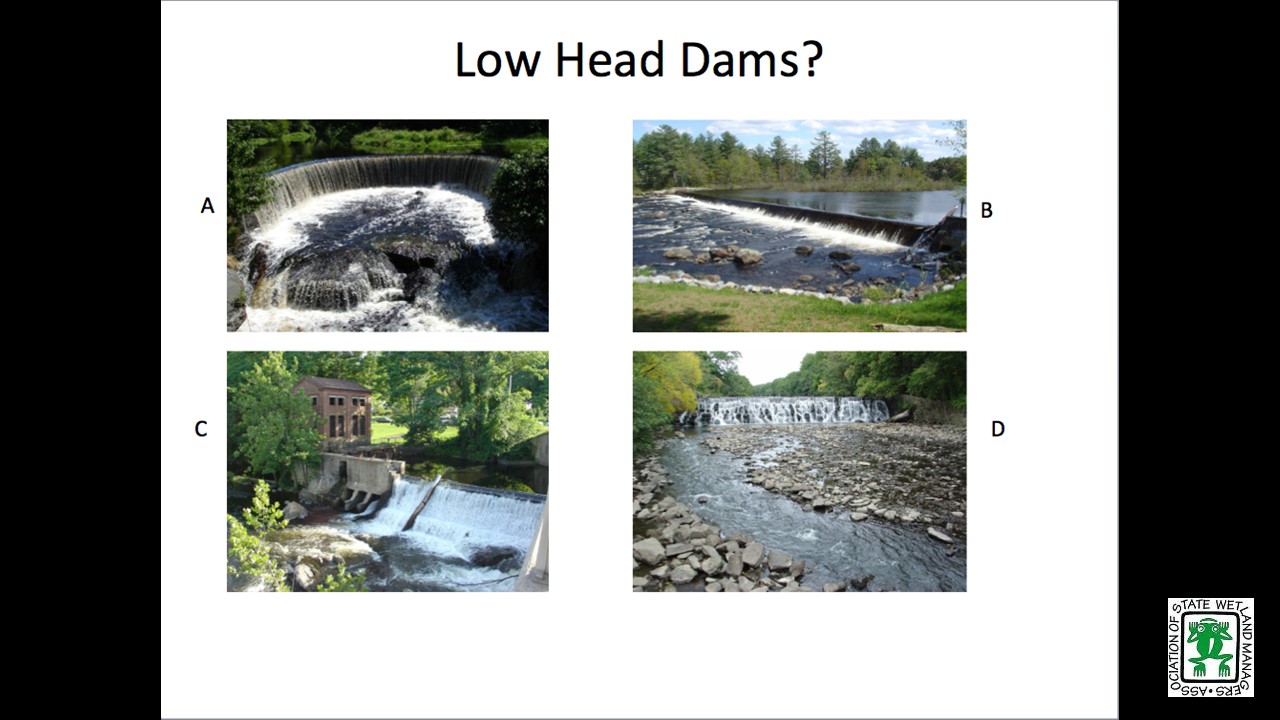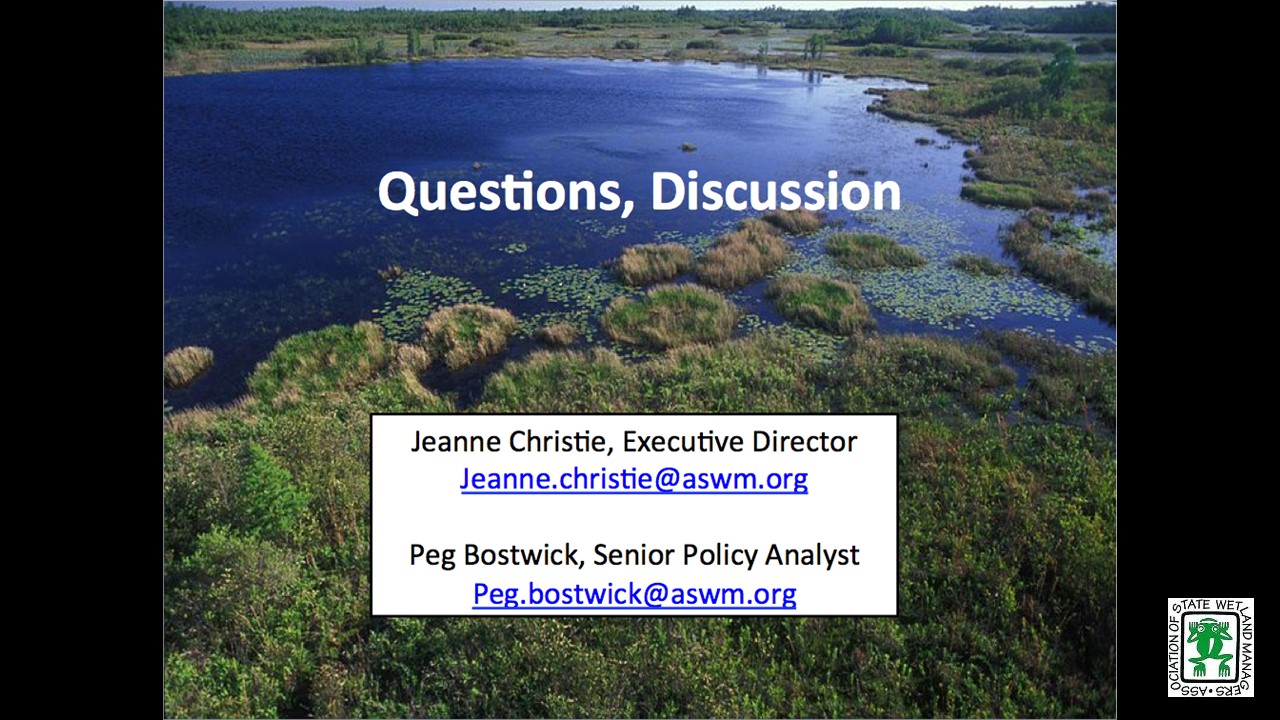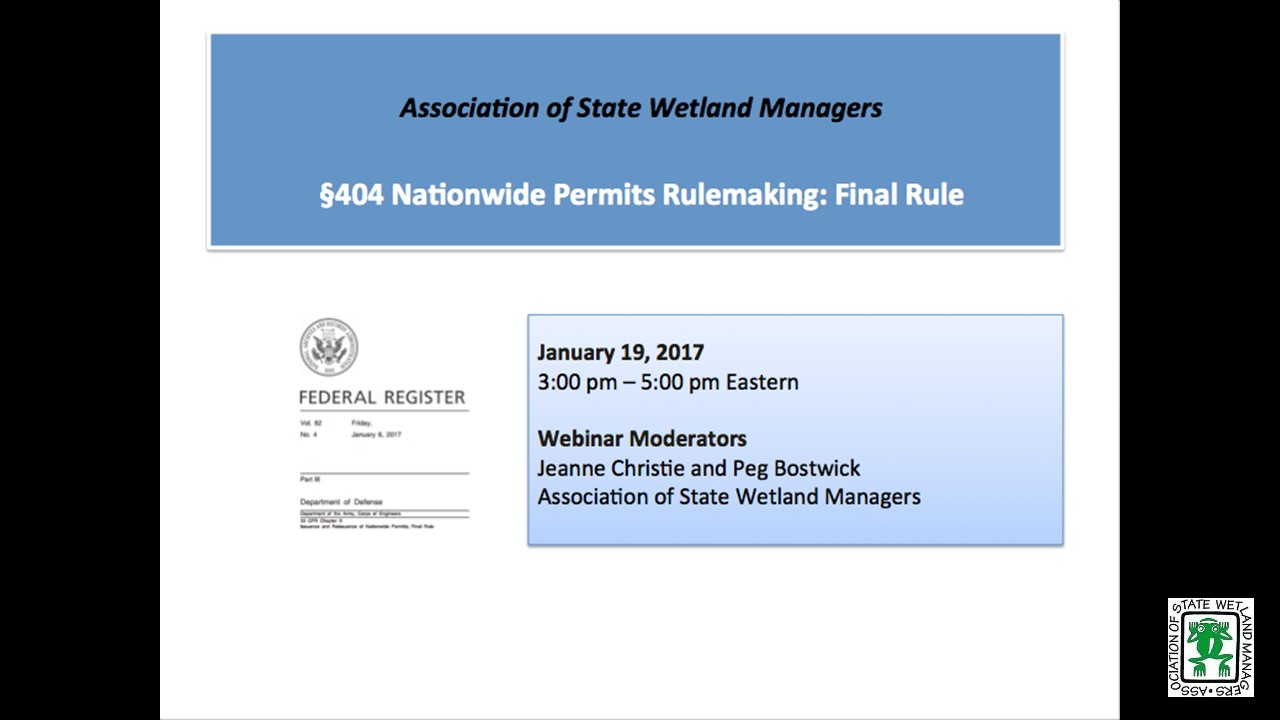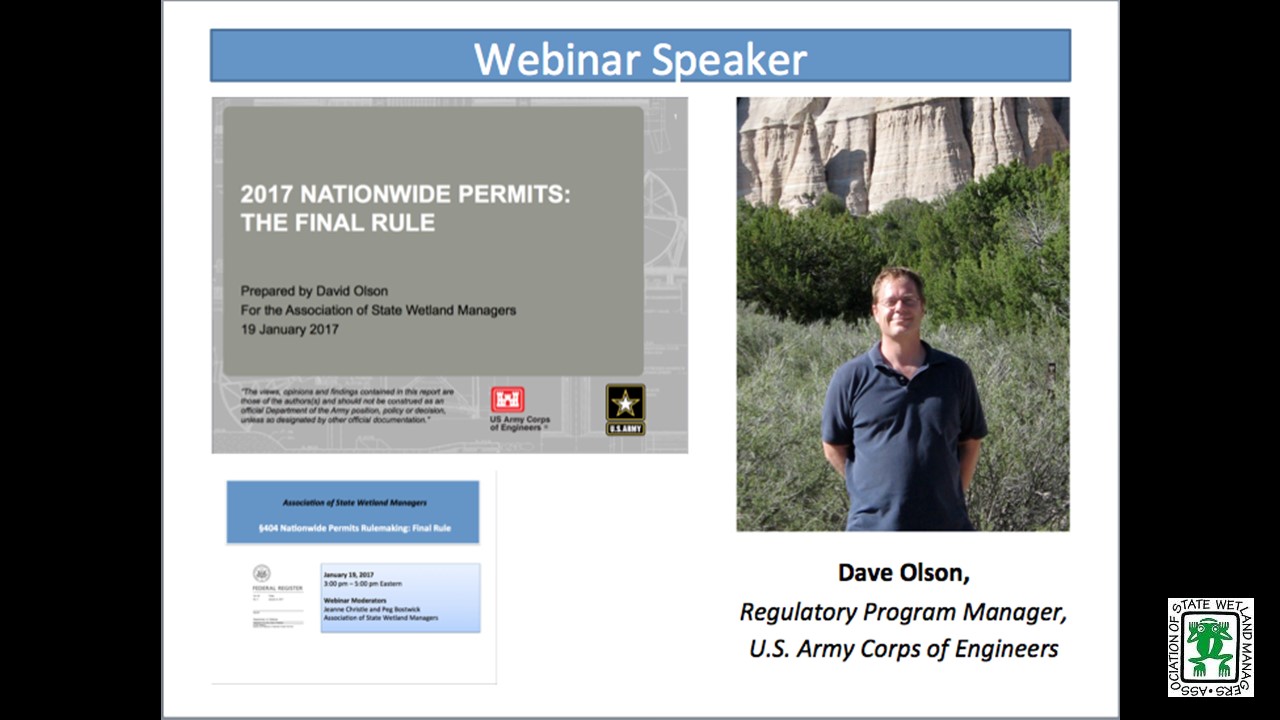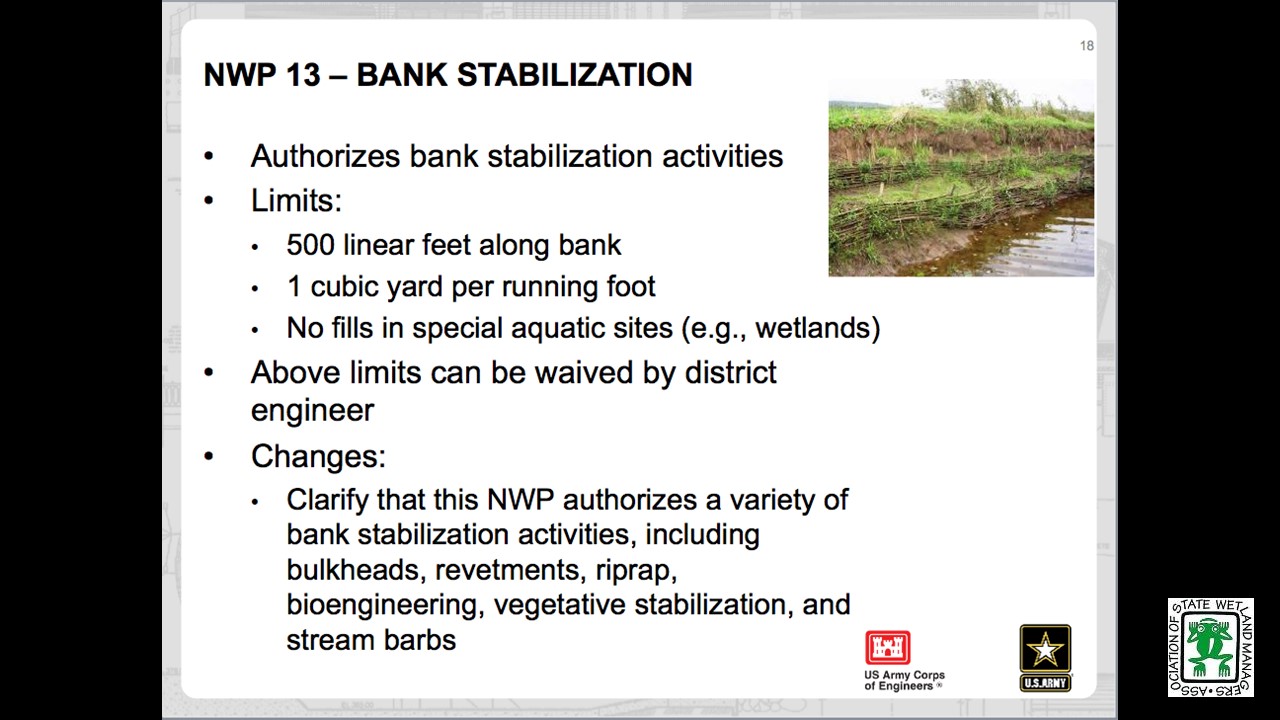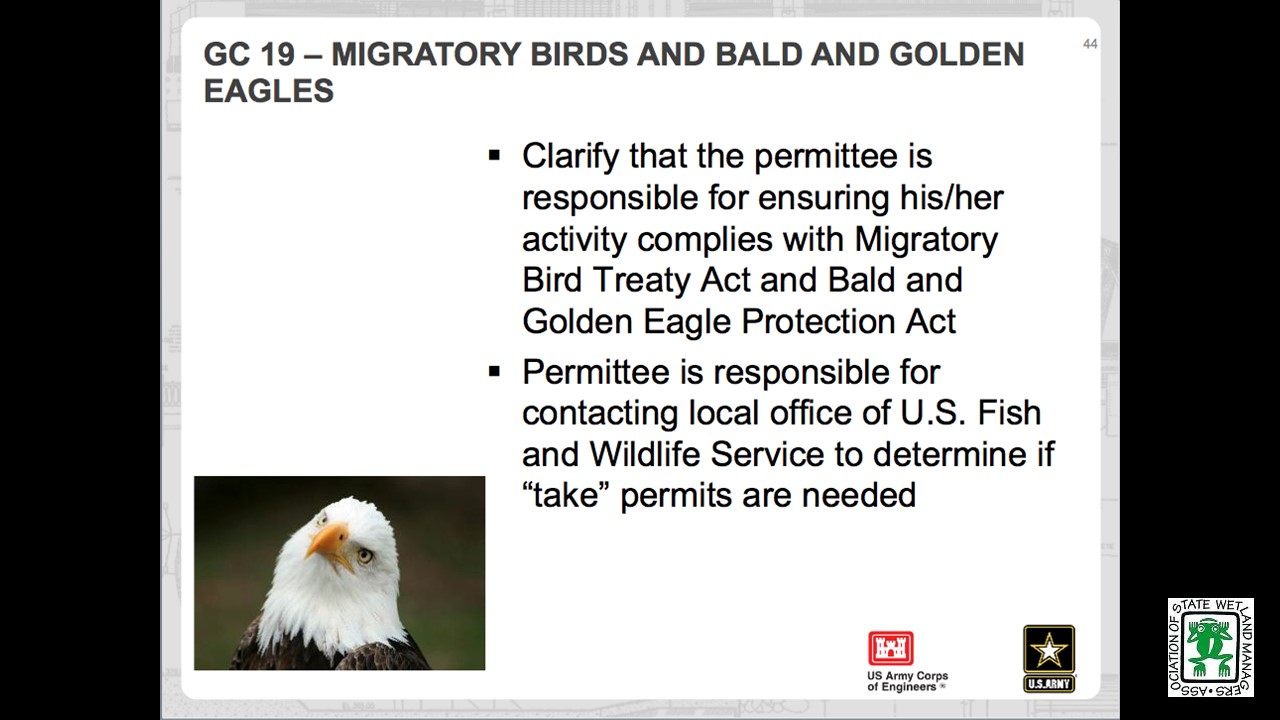Wetland Link International Americas Webinar:
Evaluation of environmental awareness-raising activities at wetland sites
Held Wednesday, October 25, 2017 – 3:00 p.m.-5:00 p.m. EDT
WEBINAR OVERVIEW
We spend a lot of time in our professional and voluntary capacities working with local communities, wetland practitioners and private sector partners to increase awareness through environmental education and other activities. But do we know how effective these activities are in leading to positive environmental changes in both individual behavior and conservation action at the site? Just as importantly, can we demonstrate this to participants, funders and project partners so they can see how our activities are influencing behavior and resulting in improvements in wetland protection or other environmental outcomes. Evaluation often is forgotten at the end of a project, but it is an essential part of improving our future work, for better outcomes for our own organizations and networks.
This webinar used practical, easy to use examples of how to evaluate, based on tried and tested techniques from partners across the Americas. The webinar was available in both English and Spanish, and will include time for discussion after the presentations.
INTRODUCTION
- Brenda Zollitsch, Policy Analyst, Association of State of Wetland Managers [PPRESENTATION PDF]
PRESENTATIONS
Introductory Remarks
PRESENTERS
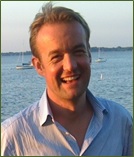 Chris Rostron, Wetland Link International, UK
Chris Rostron, Wetland Link International, UK
Chris manages the WLI global project, a support network for those delivering education, engagement and awareness-raising activities at wetland education centers. [PRESENTATION PDF]
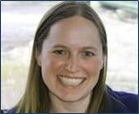 Ethel Wilkerson, Manomet. (USA)
Ethel Wilkerson, Manomet. (USA)
Building practical evaluation techniques into your project. [PRESENTATION PDF]
Ethel works with program managers to establish developmental evaluation across the varied programs of Manomet including wetland conservation, climate smart forest management, and grocery stewardship. With metrics that measure incremental progress towards outcomes, development evaluation allows for real-time feedback and program adjustment during implementation.
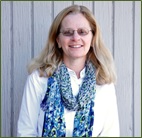 Susan Bonfield, Environment for the Americas. (USA)
Susan Bonfield, Environment for the Americas. (USA)
Evaluating the needs or minority ethnic communities to encourage access to protected natural areas. [PRESENTATION PDF]
In the US, minority ethnic groups are often under-represented in the visitors to protected natural areas. Susan has worked on looking at interviews with these groups to establish perceptions towards wild areas and what the barriers to visitation might be.
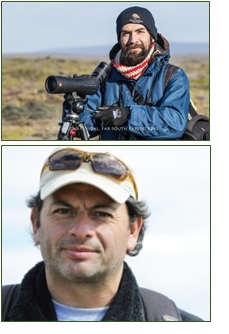 Sebastián Saiter / Ricardo Matus, Patagonian Ecological Association. (Punta Arenas, CHILE)
Sebastián Saiter / Ricardo Matus, Patagonian Ecological Association. (Punta Arenas, CHILE)
"Tres Puentes wetland, valuation of a natural classroom for conservation". [PRESENTATION PDF]
The Association is composed of people from different professions, students and children, who share the purpose of preserving and understanding species that inhabit the urban natural reserves of Patagonia. This interdisciplinary and trans-generations team has been evaluated on their working lines looking the community involvement to wetland conservation. Born in 2007, it has focused its work with neighbours and local schools. It is part of the Patagonia Natural Reserves Network.
Interactive Discussion
The last segment of the webinar will host an interactive discussion where you are invited to share your experiences in evaluation of projects.
Based on Demand - Option for Real Time Spanish-English Translation
Based on the amount of demand, we have the option to hold the webinar with consecutive translation between Spanish and English. This translation service must be arranged well in advance of the presentation date, so if you are interested in participating while listening to Spanish translation, please contact chris.rostron@wwt.org.uk.
BIOS
Sebastián Saiter is a Punta Arenas-born naturalist and birder. Since childhood he showed a passion for discovering Nature and exploring the landscapes of Chilean Patagonia. He studied Adventure Tourism, and is an active member of NGO Agrupacion Ecologica Patagonica, involved in projects to protect wetlands, urban parks and reserves: he works on environmental education projects with children, in both private and public schools in the area.
Ricardo Matus is a naturalist who participates in research and conservation projects in the extreme south of Patagonia. During last ten years he has been working in the reproductive biology and conservation actions of the Ruddy-headed goose and also developing a study in the Magellanic plover in his breeding area.
![]()
Partnering with Beaver to Benefit Sage Grouse and Working Lands: Restoring Emerald Islands in the Sagebrush Sea
Held Wednesday, July 26, 2017 - 3:00 p.m.-5:00 p.m. Eastern
INTRODUCTION
- Brenda Zollitsch, Policy Analyst, Association of State of Wetland Managers [PRESENTATION PDF]
PRESENTERS
- Jeremy Maestas, Sagebrush Ecosystem Specialist, USDA-NRCS West National Technology Support Center,
Portland, OR - Dr. Joe Wheaton, Professor, Watershed Sciences Department, Utah State University, Logan, UT
- [PRESENTATION PDF]
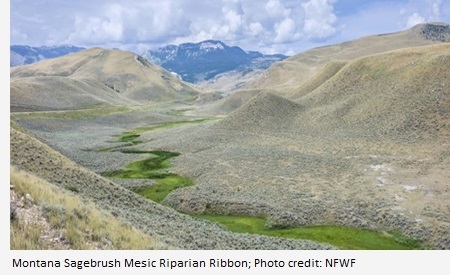 ABSTRACT
ABSTRACT
In the arid sagebrush ecosystem of the American West, wetlands and other mesic habitats—such as riparian areas and wet meadows—comprise less than 2% of the landscape yet they are disproportionately important to people and wildlife. As summer heat dries out soils in sagebrush uplands, species like sage grouse—along with livestock and many other wildlife species—follow the green line seeking out wetter, more productive areas. These mesic habitats serve as grocery stores providing nutritious forage, including the protein-rich forb and insect foods that help newly hatched sage grouse chicks grow and thrive. With roughly three quarters of mesic areas in private ownership, western ranchers play an integral role in conserving these vital resources. Recently, the NRCS-led Sage Grouse Initiative launched a campaign across 11 western states to accelerate protection, restoration, and enhancement of mesic habitats. Restoration opportunities abound but techniques that are relatively simple, low cost, and effective are needed to engage more landowners and partners in conservation at ecologically meaningful scales. Increasingly, ranchers and agencies in the west are learning to partner with beaver as a ‘cheap and cheerful’ alternative for achieving a myriad of desired outcomes. This webinar discussed recent partner efforts to scale up riparian and wet meadow restoration with private landowners in sage grouse habitats, and in particular, how Beaver Dam Analogues (BDAs) and other beaver-assisted techniques are being employed as a low-cost restoration tool to boost habitat resilience for wildlife and working lands.
BIOS
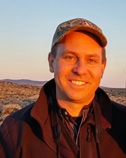 Jeremy Maestas is the national NRCS Sagebrush Ecosystem Specialist responsible for helping NRCS staff and partners put science into practice through strategic habitat conservation delivery in sagebrush ecosystems across the western U.S. He grew up in Nevada and went on to earn B.S. and M.S. degrees in Wildlife Biology from Colorado State University. Much of his career has focused on sustaining working landscapes in desert ecosystems, where his contributions have included implementation of large-scale strategic approaches to reducing conifer encroachment, wildfire and invasive species threats, and scaling-up mesic habitat conservation.
Jeremy Maestas is the national NRCS Sagebrush Ecosystem Specialist responsible for helping NRCS staff and partners put science into practice through strategic habitat conservation delivery in sagebrush ecosystems across the western U.S. He grew up in Nevada and went on to earn B.S. and M.S. degrees in Wildlife Biology from Colorado State University. Much of his career has focused on sustaining working landscapes in desert ecosystems, where his contributions have included implementation of large-scale strategic approaches to reducing conifer encroachment, wildfire and invasive species threats, and scaling-up mesic habitat conservation.
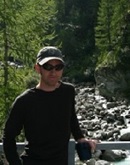 Joe Wheaton is an Associate Professor at Utah State University and a fluvial geomorphologist with over a decade of experience in river restoration, including working with beaver in restoration. Joe runs the Ecogeomorphology & Topographic Analysis Lab at Utah State U. and is a leader in the monitoring and modeling of riverine habitats and watersheds. He is the co-director of the Intermountain Center for River Rehabilitation & Restoration. He worked four years in consulting engineering before completing his B.S. in Hydrology (2003, UC Davis), M.S. and Ph.D. in Hydrologic Sciences (2003, UC Davis; 2008, U. of Southampton, UK). He has worked as a lecturer (U. of Wales 2006-08), Research Assistant Professor (Idaho State U. 2008-09) and is an Assistant Professor at Utah State U. (2009-present) where he teaches GIS, Fluvial Hydraulics and Ecohydraulics.
Joe Wheaton is an Associate Professor at Utah State University and a fluvial geomorphologist with over a decade of experience in river restoration, including working with beaver in restoration. Joe runs the Ecogeomorphology & Topographic Analysis Lab at Utah State U. and is a leader in the monitoring and modeling of riverine habitats and watersheds. He is the co-director of the Intermountain Center for River Rehabilitation & Restoration. He worked four years in consulting engineering before completing his B.S. in Hydrology (2003, UC Davis), M.S. and Ph.D. in Hydrologic Sciences (2003, UC Davis; 2008, U. of Southampton, UK). He has worked as a lecturer (U. of Wales 2006-08), Research Assistant Professor (Idaho State U. 2008-09) and is an Assistant Professor at Utah State U. (2009-present) where he teaches GIS, Fluvial Hydraulics and Ecohydraulics.
Held Tuesday, July 11, 2017 - 12:00 p.m.-2:00 p.m. Eastern
INTRODUCTION
- Jeanne Christie, Executive Director, Association of State of Wetland Managers [PRESENTATION PDF]
PRESENTERS
- Jan Goldman-Carter, National Wildlife Federation
- Virginia Albrecht, Hunton and Williams, LLP
- Royal C. Gardner, Stetson University, College of Law [PRESENTATION PDF]
The U.S. Environmental Protection Agency (EPA) and the Department of Army (Army) are carrying out a two-step process to revise Clean Water Act Jurisdiction. The first step is to repeal the Clean Water Rule regulation finalized by EPA and the Army in the spring of 2015 and replace it with the 1986 rule previously in place in conjunction with the Rapanos guidance. Essentially this step formally adopts the current status quo which remains in place because the Clean Water Rule is stayed by the Sixth Circuit Court pending action by the court. The next step following the repeal and replace rulemaking will be a new rule based in part on the Scalia Opinion in the Rapanos decision.
As states, tribes, and others review the proposed rule and think about the rulemaking that is planned to follow it, there are many issues to consider. ASWM has invited legal experts representing diverse perspectives to share their insights to help webinar participants to understand the current process, issues of importance, and potential outcomes as these rulemaking efforts are carried out and later challenged in the courts.
BIOS
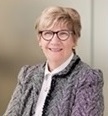 Virginia S. Albrecht is Special Counsel for Hunton and Williams. Her practice focuses exclusively on environmental law and administrative law --- in particular, the Clean Water Act (CWA) wetlands program, the Endangered Species Act (ESA), the National Environmental Policy Act (NEPA) and other federal regulatory programs that affect the use of land. She has experience in permit negotiation, litigation of policy issues, lobbying Congress and the Administration, enforcement defense, and compliance counseling. Representative clients include development companies, agricultural and mining companies, state and local agencies, and trade associations. She has extensive experience with federal environmental agencies both in Washington and in district and regional offices. Virginia is a member of the assumable waters subcommittee which EPA established in 2015 to obtain advice on the scope of waters that can be assumed and Administered by states under section 404 of the clean water act. She is also an adjunct professor for the University of Miami School of Law Program in Real Property Development. She received her JD from Vanderbilt University Law School, was Articles Editor of the Vanderbilt Law Review in1981, and received her MA in Communications from the University of Pennsylvania in 1970 and her BS from the University of Wisconsin in 1964. She has bar admissions in the District of Columbia.
Virginia S. Albrecht is Special Counsel for Hunton and Williams. Her practice focuses exclusively on environmental law and administrative law --- in particular, the Clean Water Act (CWA) wetlands program, the Endangered Species Act (ESA), the National Environmental Policy Act (NEPA) and other federal regulatory programs that affect the use of land. She has experience in permit negotiation, litigation of policy issues, lobbying Congress and the Administration, enforcement defense, and compliance counseling. Representative clients include development companies, agricultural and mining companies, state and local agencies, and trade associations. She has extensive experience with federal environmental agencies both in Washington and in district and regional offices. Virginia is a member of the assumable waters subcommittee which EPA established in 2015 to obtain advice on the scope of waters that can be assumed and Administered by states under section 404 of the clean water act. She is also an adjunct professor for the University of Miami School of Law Program in Real Property Development. She received her JD from Vanderbilt University Law School, was Articles Editor of the Vanderbilt Law Review in1981, and received her MA in Communications from the University of Pennsylvania in 1970 and her BS from the University of Wisconsin in 1964. She has bar admissions in the District of Columbia.
 Jan Goldman-Carter is Director, Wetlands and Water Resources for the National Wildlife Federation. She manages the NWF campaign to restore Clean Water Act protections and works to strengthen wetland and watershed protections regionally and nationally. Jan has lectured and written extensively on Clean Water Act and wetlands laws and programs since 1987. She received the EPA-ELI National Wetlands Award in 1993. Jan served as a wetlands specialist with the U.S. Fish and Wildlife Service, the U.S. Environmental Protection Agency, and the U.S. Army Corps of Engineers. She grew up on the edge of the "River of Grass" - the Everglades - and enjoys canoeing, kayaking, birding and otherwise being in and on the water. She received her B.A. in Biology and Environmental Studies from Williams College, Massachusetts, her M.S. in Natural Resources from the University of Michigan School of Natural Resources, and her law degree from the University of Minnesota.
Jan Goldman-Carter is Director, Wetlands and Water Resources for the National Wildlife Federation. She manages the NWF campaign to restore Clean Water Act protections and works to strengthen wetland and watershed protections regionally and nationally. Jan has lectured and written extensively on Clean Water Act and wetlands laws and programs since 1987. She received the EPA-ELI National Wetlands Award in 1993. Jan served as a wetlands specialist with the U.S. Fish and Wildlife Service, the U.S. Environmental Protection Agency, and the U.S. Army Corps of Engineers. She grew up on the edge of the "River of Grass" - the Everglades - and enjoys canoeing, kayaking, birding and otherwise being in and on the water. She received her B.A. in Biology and Environmental Studies from Williams College, Massachusetts, her M.S. in Natural Resources from the University of Michigan School of Natural Resources, and her law degree from the University of Minnesota.
 Royal C. Gardner is Professor of Law and Director of the Institute for Biodiversity Law and Policy at Stetson University College of Law. He is an internationally recognized expert in wetland law and policy. Recent projects include advising the Government of Oman regarding wetland policy, coauthoring a U.S. Supreme Court amicus brief on behalf of environmental scientists, and creating an interdisciplinary course that facilitates discourse among experienced scientists, policymakers, and students.
Royal C. Gardner is Professor of Law and Director of the Institute for Biodiversity Law and Policy at Stetson University College of Law. He is an internationally recognized expert in wetland law and policy. Recent projects include advising the Government of Oman regarding wetland policy, coauthoring a U.S. Supreme Court amicus brief on behalf of environmental scientists, and creating an interdisciplinary course that facilitates discourse among experienced scientists, policymakers, and students.
His research and scholarship focus on U.S. and international wetland legal and policy issues, with an emphasis on biodiversity offsets. He has lectured in Africa, Asia, Europe, and North and South America.
Professor Gardner is the current chair of the Scientific and Technical Review Panel (STRP) for the Ramsar Convention, an intergovernmental wetland treaty with 168 countries. He also served on the Ramsar STRP as North American representative (2006–2008) and invited expert (2009–2012). He was chair of the U.S. National Ramsar Committee (2005–2008) and participated in the Ramsar Convention Conferences of the Parties held in Spain (2002), Uganda (2005), Korea (2008), and Romania (2012). In 2006, he won the National Wetlands Award for Education and Outreach. In 1999–2001, Professor Gardner was appointed to the National Research Council’s Committee on Mitigating Wetland Losses.
An executive editor of the Boston College Law Review and a member of the Order of the Coif, he graduated magna cum laude from Boston College Law School. He then clerked for Chief Judge Francis J. Boyle of the United States District Court for the District of Rhode Island. From 1989 to 1993, he served in the Army General Counsel’s office as the Department of the Army’s principal wetland attorney, advising the assistant secretary of the Army (civil works) on legal and policy issues related to the Corps of Engineers’ administration of the Clean Water Act section 404 program. From 1993 until he joined the Stetson faculty in 1994, Professor Gardner worked for the Department of Defense, where he participated in negotiating international agreements with Russia, Ukraine, Kazakhstan, and Belarus to facilitate the dismantlement of the former Soviet Union’s nuclear weapons.
Since joining the Stetson faculty, Professor Gardner has twice received Stetson University’s Homer and Dolly Hand Award for Excellence in Faculty Scholarship and has been voted the Outstanding Professor by the Stetson student body. He has taught at Stetson’s summer programs in Spain, Germany, Argentina, and Estonia, and has been a visiting professor at the Universidad de Málaga (Spain) and Concordia International University-Estonia, where he received the Outstanding Instructor Award. At Stetson, Professor Gardner has served as director of graduate and international programs, associate dean, vice dean, and interim dean.
Please click only once on each video recording to view in this window.
The presentations for Jan Goldman-Carter and Virginia Albrecht are not available for viewing.
![]()
How to Connect with the Public to Protect Wetlands: Findings from ASWM’s Wetland Communications Case Study Project
Held Tuesday, July 11, 2017 - 3:00 p.m.-5:00 p.m. Eastern
INTRODUCTION
- Marla Stelk, Policy Analyst, Association of State of Wetland Managers [PRESENTATION PDF]
PRESENTERS
- Brenda Zollitsch, Policy Analyst, Association of State of Wetland Managers [PRESENTATION PDF]
- Ted LaGrange, Wetland Program Manager, Nebraska Game and Parks Commission [PRESENTATION PDF]
ABSTRACT
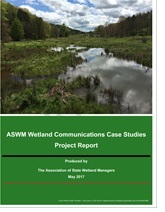 This webinar shares the findings from ASWM’s new report on Wetland Communications Case Studies. ASWM’s Communications Project was designed to inform communications planning and future research on wetland messaging and opportunities to initiate behavior change through targeted communication strategies and products. The report is designed first to provide information that will inform future federal, state and tribal wetland communication efforts. Secondly, the report identifies and documents a range of existing successful communication practices by states, tribes and nonprofits working on wetland issues. This webinar presented a summary of the case studies and focus on useful findings that help guide those considering or working on developing communications projects related to wetlands. Participants will come away with knowledge about several new resources and lots of great advice from case study organizations.
This webinar shares the findings from ASWM’s new report on Wetland Communications Case Studies. ASWM’s Communications Project was designed to inform communications planning and future research on wetland messaging and opportunities to initiate behavior change through targeted communication strategies and products. The report is designed first to provide information that will inform future federal, state and tribal wetland communication efforts. Secondly, the report identifies and documents a range of existing successful communication practices by states, tribes and nonprofits working on wetland issues. This webinar presented a summary of the case studies and focus on useful findings that help guide those considering or working on developing communications projects related to wetlands. Participants will come away with knowledge about several new resources and lots of great advice from case study organizations.
BIOS
 Brenda Zollitsch is a Policy Analyst at the Association of State of Wetland Managers. Brenda conducts research and policy analysis on wetland and stream issues; manages projects; develops communications guidance; and writes articles and blogs for ASWM. Brenda currently leads a project focused on improving linear oil and gas pipeline energy permitting to protect wetlands. Brenda recently completed a national status and trends/state summaries project for ASWM analyzing 50 state wetland programs across the United States, a project focused on increasing access to high quality wetland training and a national stream identification, delineation and mitigation study. Brenda has 25 years of organizational leadership experience and a strong background in academic and action research, facilitation, training and communications. Brenda received her PhD in Public Policy from the University of Southern Maine’s Muskie School of Public Service in 2012, focusing on environmental policy and collaborative environmental management. She has her Master’s degree from Boston University.
Brenda Zollitsch is a Policy Analyst at the Association of State of Wetland Managers. Brenda conducts research and policy analysis on wetland and stream issues; manages projects; develops communications guidance; and writes articles and blogs for ASWM. Brenda currently leads a project focused on improving linear oil and gas pipeline energy permitting to protect wetlands. Brenda recently completed a national status and trends/state summaries project for ASWM analyzing 50 state wetland programs across the United States, a project focused on increasing access to high quality wetland training and a national stream identification, delineation and mitigation study. Brenda has 25 years of organizational leadership experience and a strong background in academic and action research, facilitation, training and communications. Brenda received her PhD in Public Policy from the University of Southern Maine’s Muskie School of Public Service in 2012, focusing on environmental policy and collaborative environmental management. She has her Master’s degree from Boston University.
 Marla Stelk is a Policy Analyst at the Association of State of Wetland Managers. For the past four years, she has focused her research on how to improve wetland restoration success. Currently, she leads the Association’s new project on healthy wetlands and healthy watersheds. Marla coordinates the Wetland Mapping Consortium and the Natural Floodplain Functions Alliance. She is the Association’s Communications Team leader, Editor of Wetland Breaking News and author of the blog, For Peat’s Sake. Marla’s areas of expertise include environmental science and policy, stakeholder engagement, facilitation and communications. At ASWM she has continued her work on climate change issues and represents ASWM on the national Advisory Committee on the Water Information Water Resources Adaptation to Climate Change Workgroup. Marla earned her MA in Community Planning and Development with a focus on Land Use and the Environment in 2013, and her BA in Environmental Issues from Colorado College in 1992.
Marla Stelk is a Policy Analyst at the Association of State of Wetland Managers. For the past four years, she has focused her research on how to improve wetland restoration success. Currently, she leads the Association’s new project on healthy wetlands and healthy watersheds. Marla coordinates the Wetland Mapping Consortium and the Natural Floodplain Functions Alliance. She is the Association’s Communications Team leader, Editor of Wetland Breaking News and author of the blog, For Peat’s Sake. Marla’s areas of expertise include environmental science and policy, stakeholder engagement, facilitation and communications. At ASWM she has continued her work on climate change issues and represents ASWM on the national Advisory Committee on the Water Information Water Resources Adaptation to Climate Change Workgroup. Marla earned her MA in Community Planning and Development with a focus on Land Use and the Environment in 2013, and her BA in Environmental Issues from Colorado College in 1992.
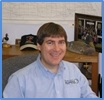 Ted LaGrange is an Iowa native, Ted moved to Nebraska in 1993 to work as the Wetland Program Manager for the Nebraska Game and Parks Commission. As Wetland Program Manager he works on a wide variety of wetland issues throughout the state including private land restoration programs, public lands management, resource advocacy and outreach. Prior to moving to Nebraska, he worked for 8 years as a Waterfowl Research Technician for the Iowa Department of Natural Resources in Clear Lake. Stationed in northern Iowa, he worked with the prairie pothole restoration program, especially evaluation of plant and waterfowl response to wetland restoration. Ted received B.S. and M.S. degrees in wildlife biology from Iowa State University. During his college years he spent summers working on refuges in Oregon and New York for the US Fish and Wildlife Service, working on a muskrat ecology study on the Upper Mississippi River, and working on the Marsh Ecology Research Project for Delta Waterfowl and Wetlands Research Station in Manitoba. His professional interests are in prairie wetlands and waterfowl/waterbird ecology.
Ted LaGrange is an Iowa native, Ted moved to Nebraska in 1993 to work as the Wetland Program Manager for the Nebraska Game and Parks Commission. As Wetland Program Manager he works on a wide variety of wetland issues throughout the state including private land restoration programs, public lands management, resource advocacy and outreach. Prior to moving to Nebraska, he worked for 8 years as a Waterfowl Research Technician for the Iowa Department of Natural Resources in Clear Lake. Stationed in northern Iowa, he worked with the prairie pothole restoration program, especially evaluation of plant and waterfowl response to wetland restoration. Ted received B.S. and M.S. degrees in wildlife biology from Iowa State University. During his college years he spent summers working on refuges in Oregon and New York for the US Fish and Wildlife Service, working on a muskrat ecology study on the Upper Mississippi River, and working on the Marsh Ecology Research Project for Delta Waterfowl and Wetlands Research Station in Manitoba. His professional interests are in prairie wetlands and waterfowl/waterbird ecology.
Please click only once on each video recording to view in this window.
![]()
The Basics of Wetland Plant Identification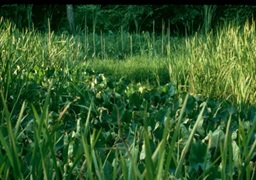
Held Thursday, June 1, 2017 – 3:00 p.m. eastern, 2:00 pm central, 1:00 pm mountain, 12:00 pm pacific, 11:00 am Alaska and 9:00 am Hawaii
INTRODUCTION
- Jeanne Christie, Executive Director, Association of State of Wetland Managers [PRESENTATION PDF]
PRESENTER
- Joe Ely, University of Central Missouri [PRESENTATION PDF]
ABSTRACT
This webinar was taught at a beginner or novice level and was open to anyone interested in learning about or improving their knowledge of plant terminology, the characteristics of common wetland plant families and species, introducing the proper use of plant keying using various resources. Those just entering the world of wetlands and wetland plant identification will benefit from learning the diagnostic characteristics of the most encountered wetland plant families and species in the Midwest. Those with some prior experience will be able to refresh their skills and enhance their intermediate skills. This webinar started with an introduction to wetland plants and their adaptions to a wet environment. The goal of the webinar was to give basic information and tools on wetland plant identification. Specifically, this webinar included an introduction to wetland plant adaptations, morphology, terminology, and the tools to aid in plant identification (structure and use of dichotomous keys).
BIO
Joe Ely is a Plant Ecologist and has been a Professor of Biology for 14 years. He has worked in the field of Plant Ecology and Botany for more than 25 years. He has field experience on barrier islands, mix-mesophytic forests, grasslands, northern conifer forests, and numerous wetlands.
Joe has a B.S. degree in Biology from Salem College, WV, a M.S. degree in Biological Sciences from Marshall University, and his Ph.D. in Plant Biology from Southern Illinois University.
Please click only once on each video recording to view in this window.
![]()
Wetland Link International - Americas Webinar:
Successfully Attracting Local People into Wetland Sites
Traducción en español disponible
 Hosted by the Association of State Wetland Managers
Hosted by the Association of State Wetland Managers
Held Tuesday, May 30, 2017 – 3:00 p.m.-5:00 p.m. EDT
WEBINAR OVERVIEW
Many wetland sites work hard to engage local people, providing communications and publicity materials, trying to make them relevant to a wide range of local stakeholders. However, many of us still struggle to bring local people into our wetlands, and this seminar looks at how we can learn from each other on the best way make wetlands relevant to people in your local area.
If you work in wetland or environmental education and engagement within the Americas, Wetland Link International (WLI) Americas and the Association of State of Wetland Managers this was a free webinar. Presentations shared engagement practices and lessons learned on various aspects of environmental engagement at wetland sites, including case studies from WLI partners in North, Central and South America. We also provided consecutive translation into English – Spanish and Spanish - English.
INTRODUCTION
- Brenda Zollitsch, Policy Analyst, Association of State of Wetland Managers [PRESENTATION PDF]
PRESENTATIONS
Introductory Remarks (English) - Chris Rostron, Wetland Link International, UK
[PRESENTATION PDF]
Chris manages the WLI global project, a support network for those delivering education, engagement and awareness-raising activities at wetland education centers. He will introduce the WLI Americas Network, the webinar topic, and presenters.
Engaging your Neighbors (English) - Nathalie Bays, Oak Hammock Marsh, Canada
[PRESENTATION PDF - ENGLISH]; [PRESENTATION PDF - SPANISH]
Keeping exhibits and programming fresh on a limited budget can be challenging. Learn how Oak Hammock Marsh Interpretive Centre works to remain relevant to the local community through a variety of engaging programs.
Using Social Media to Bring Visitors to Your Site (Spanish) - Daniel Bernal, Wetlands Bogotá, Colombia [PRESENTATION PDF]
Working to better engage people at an urban Wetlands in Colombia’s capital, Bogotá, has meant using social media in various forms to bring them in. Daniel will talk about what works and what doesn’t.
Fly Like an Eagle – Using Wildlife Cameras to Attract Local and International Visitors (English) - John DeFillipo, John Bunker Sands Wetland Center, Texas, US
[PRESENTATION PDF - ENGLISH]; [PRESENTATION PDF - SPANISH]
The John Bunker Sands Wetland Center has an active nesting pair of American Bald Eagles that can be monitored through a live wildlife camera on our website. The presenter will discuss how this amenity attracts local and international visitors, as well as “armchair conservationists,” to become vested in the conservation mission of the center.
Using Special Events to Engage Locals Onsite (Spanish) - Ingrid M. Flores, Caribbean Regional Coordinator for International Migratory Bird Day and Caribbean Endemic Bird Festival (Spanish)
[PRESENTATION PDF]
International Migratory Bird Day (IMBD) takes place every year during Spring and Fall with events and activities coordinated across multiple sites in the Western Hemisphere. Environment for the Americas is the home of IMBD and Birds Caribbean is the home of the Caribbean Endemic Birds Festival (CEBF) from April 22nd (Earth Day) to May 22nd (Biodiversity Day). Ingrid will discuss how to plan and deliver exciting and inclusive events on site.
Interactive Discussion
The last segment of the webinar hosted an interactive discussion where you were invited to share your experiences in engaging local citizens in wetland projects and protection.
BIOS
 Chris Rostron is the Programme Manager for Wetland Link International, which is based at the Wildfowl and Wetlands Trust (WWT) in the United Kingdom. He has worked in this position for the past 6 years. He has a background in environmental community involvement, network development, and holds a Masters degree in Environment Management, with a focus on river basin management.
Chris Rostron is the Programme Manager for Wetland Link International, which is based at the Wildfowl and Wetlands Trust (WWT) in the United Kingdom. He has worked in this position for the past 6 years. He has a background in environmental community involvement, network development, and holds a Masters degree in Environment Management, with a focus on river basin management.
 Nathalie Bays is the Manager of Operations at the award-winning Oak Hammock Marsh Interpretive Centre in Manitoba, Canada. Originally from the province of Quebec, she holds a BSC in Wildlife and an MSc in Natural Resource Sciences. She worked as the Education Coordinator for 14 years at the Interpretive Centre and has been the Manager for the past six. The Oak Hammock Marsh Interpretive Centre is an award-winning wetland education facility located north of Winnipeg, with the mission to “Connect people with wetlands”.
Nathalie Bays is the Manager of Operations at the award-winning Oak Hammock Marsh Interpretive Centre in Manitoba, Canada. Originally from the province of Quebec, she holds a BSC in Wildlife and an MSc in Natural Resource Sciences. She worked as the Education Coordinator for 14 years at the Interpretive Centre and has been the Manager for the past six. The Oak Hammock Marsh Interpretive Centre is an award-winning wetland education facility located north of Winnipeg, with the mission to “Connect people with wetlands”.
 John DeFillipo, Director of the John Bunker Sands Wetland Center, is a naturalist with over 20 years of experience blending ecological concepts with business insights. John has been a naturalist with Camp McDowell Environmental Education Center in Alabama and Crow’s Neck Environmental Education Center in Mississippi. In 2002, he became an Outreach Educator with the Mississippi Museum of Natural Science where he presented endangered species programs, including live Alligators. While living in Mississippi, John served as the president of the Mississippi Environmental Education Alliance and was the recipient of the 2008 Environmental Educator of the Year Award. In 2008 he became Lead Natural Science Educator with the Perot Museum of Nature and Science before becoming the Director of the Wetland Center in March 2010. In August 2015, John received the New Outstanding Leader Award from the Association of Nature Center Administrators (ANCA) where he currently serves as VP of Development.
John DeFillipo, Director of the John Bunker Sands Wetland Center, is a naturalist with over 20 years of experience blending ecological concepts with business insights. John has been a naturalist with Camp McDowell Environmental Education Center in Alabama and Crow’s Neck Environmental Education Center in Mississippi. In 2002, he became an Outreach Educator with the Mississippi Museum of Natural Science where he presented endangered species programs, including live Alligators. While living in Mississippi, John served as the president of the Mississippi Environmental Education Alliance and was the recipient of the 2008 Environmental Educator of the Year Award. In 2008 he became Lead Natural Science Educator with the Perot Museum of Nature and Science before becoming the Director of the Wetland Center in March 2010. In August 2015, John received the New Outstanding Leader Award from the Association of Nature Center Administrators (ANCA) where he currently serves as VP of Development.
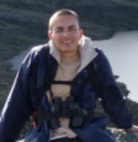 Daniel Bernal is an Electronic engineer. Founding member of the Wetlands Bogotá foundation, REtroCD programme, and Friend of the Van der Hammen Reserve; environmentalist, citizen reporter and environmental activist, birdwatcher, yoga and vegetarianism; I live in a wetland.
Daniel Bernal is an Electronic engineer. Founding member of the Wetlands Bogotá foundation, REtroCD programme, and Friend of the Van der Hammen Reserve; environmentalist, citizen reporter and environmental activist, birdwatcher, yoga and vegetarianism; I live in a wetland.
The Wetlands Bogotá foundation was the winner of the Ramsar Wetland Conservation Awards for "Young wetland champions 2015" and the "Premios Colombia En línea" as best research site in Colombia 2012.
Daniel is a member of the RetroCD programme, the first recycling programme for CDs/DVDs in Latin America. Part of the communication team of the Network of Friends of the Thomas Van de Hammen Reserve.
Listed as: ‘Environmentalist to follow on twitter in 2016’ by the Network for Environmental Justice in Colombia. Columnist as part of the celebration of 130 years of the Spectador newspaper with the article ‘Bogota wetlands; an oasis in the big city’.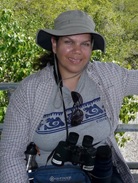 Ingrid M. Flores is a wildlife biologist with experience conducting research, teaching science, and working with the public. Ingrid is also project manager and wildlife biologist at the Sea Turtles Conservation Program of Palmas de Mar Resort in Humacao, Puerto Rico. Ingrid coordinates CEBF and IMBD activities across the Caribbean, working with over 30 coordinators from Bermuda to Bonaire. This entails helping coordinators plan activities, facilitating their work with local media, and distributing education and outreach materials on Caribbean birds and the festival theme to our network of coordinators. She has a M.S. degree in Environmental Management and also served as an adjunct professor in the Department Natural Science and Technology at the University of Turabo in Gurabo, Puerto Rico, where she taught biology to undergraduate students.
Ingrid M. Flores is a wildlife biologist with experience conducting research, teaching science, and working with the public. Ingrid is also project manager and wildlife biologist at the Sea Turtles Conservation Program of Palmas de Mar Resort in Humacao, Puerto Rico. Ingrid coordinates CEBF and IMBD activities across the Caribbean, working with over 30 coordinators from Bermuda to Bonaire. This entails helping coordinators plan activities, facilitating their work with local media, and distributing education and outreach materials on Caribbean birds and the festival theme to our network of coordinators. She has a M.S. degree in Environmental Management and also served as an adjunct professor in the Department Natural Science and Technology at the University of Turabo in Gurabo, Puerto Rico, where she taught biology to undergraduate students. ![]()
Recorded Webinar: 2017 Annual State/Tribal/Federal Coordination Meeting
What's Next for Clean Water Act Jurisdiction:
Maintaining - or Draining - the Swamps? The Future of the Clean Water Rule
Held Tuesday, April 11, 2017
INTRODUCTION
- Jeanne Christie, Executive Director, Association of State of Wetland Managers
ABSTRACT
In the spring of 2017, the US Environmental Protection Agency and the Army Corps of Engineers are implementing Executive Order 13778 on Restoring the Rule of Law, Federalism, and the Economic Growth by Reviewing the ”Waters of the United States” Rule which directs the federal agencies to rescind the current Clean Water Rule and replace it. This recorded webinar by Stephen Samuels, retired, formerly with Department of Justice, provided information about the status of the currently stayed Clean Water Rule and the case that has been accepted to be heard in 2018 before the Supreme Court, as well as a succinct overview of Supreme Court decisions addressing Clean Water Act jurisdiction in recent decades through the present day.
PRESENTER
- Stephen Samuels, Retired, formerly with Department of Justice [PRESENTATION PDF]
BIO
Now retired, Stephen Samuels was previously Assistant Chief of the Environmental Defense Section of the Environment & Natural Resources Division of the U.S. Department of Justice. In that capacity, Mr. Samuels supervised a staff of 15 attorneys handling federal district court litigation involving all the major environmental pollution statutes. Mr. Samuels has 31 years of experience enforcing and defending the Clean Water Act Section 404 regulatory program. During that time, he helped lead the federal government’s litigation responses to the Supreme Court's decisions in SWANCC, Rapanos, Sackett and Hawkes. Until his retirement in January 2017, Mr. Samuels headed the DOJ litigation team that defended challenges to the Clean Water Rule. Mr. Samuels is a frequent speaker on Clean Water Act jurisdiction at conferences around the country. Mr. Samuels previously was an attorney with the U.S. Department of Energy and with the law firm of Breed, Abbott & Morgan. Mr. Samuels earned his J.D. in 1977 from Stanford Law School and his B.A. in 1974 from Tulane University.
Please click only once on each video recording to view in this window.
![]()
Nationwide Permit Rule Webinar: Low-head Dam Removal: Technical Issues and Considerations for State/Tribal/Federal Review
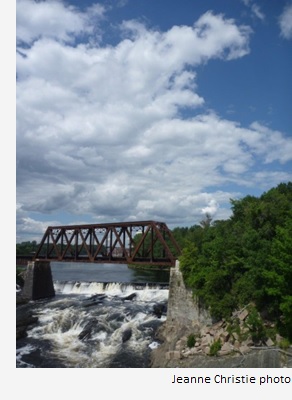 Held Thursday, February 9, 2017 - 3:00 p.m. ET
Held Thursday, February 9, 2017 - 3:00 p.m. ET
INTRODUCTION
- Jeane Christie, Executive Director, Association of State of Wetland Managers and Peg Bostwick, Association of State of Wetland Managers [PRESENTATION PDF]
PRESENTER
- Serena McClain, American Rivers [PRESENTATION PDF]
[PRESENTATION WITH NOTES PDF] - James MacBroom, Milone & MacBroom[PRESENTATION PDF]
ABSTRACT
The New Frontier: An Overview of Recent Policy and Regulatory Changes Affecting Dam Removal Projects
Removing dams and other instream barriers can be one of the fastest, most effective ways of restoring ecological function. However, as more dam removal projects are proposed, many proponents have found that the regulatory environment can be unreasonably complicated, time consuming, and expensive for both the applicant and regulatory authorities. Over the course of the last 18 months, the U.S. Army Corps of Engineers (Corps) has completed rulemaking that has a direct bearing on implementation of future dam removal projects and attempts to address some of these challenges. This presentation provided an overview of the issuance of the new Corps nationwide permit (NWP) 53, Removal of Low-Head Dams, including the use of case studies to illustrate select projects where this type of permit may have been applicable.
BIOS
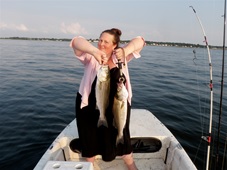 Serena McClain is a director of river restoration with American Rivers in Washington, DC. She has worked in the river restoration field for more than 15 years, engaging with regional and national stakeholders to demonstrate how to enhance safety, quality of life and economic development by restoring the natural function of rivers. McClain has managed and provided technical assistance to projects around the country, utilizing her communications and policy expertise to ensure that local communities and key decision-makers are aware of the opportunities available to them and are equipped with the tools necessary to aid them in those decisions. She currently leads the program’s dam removal practice.
Serena McClain is a director of river restoration with American Rivers in Washington, DC. She has worked in the river restoration field for more than 15 years, engaging with regional and national stakeholders to demonstrate how to enhance safety, quality of life and economic development by restoring the natural function of rivers. McClain has managed and provided technical assistance to projects around the country, utilizing her communications and policy expertise to ensure that local communities and key decision-makers are aware of the opportunities available to them and are equipped with the tools necessary to aid them in those decisions. She currently leads the program’s dam removal practice.
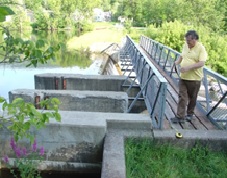 Jim MacBroom earned BS and MS degrees in Civil Engineering from the University of Connecticut and is a registered Professional Engineer in five states. He is Vice President of Milone & MacBroom Inc, a Civil and Environmental Engineering consulting firm located in Cheshire Connecticut, and he developed and taught graduate courses in River Processes & Restoration and Applied Hydrology at Yale University for 17 years. He has over 35 years of experience in watershed management, open channel hydraulics, dam repair and removal, fish passage, computer modeling, fluvial morphology, stream restoration, and tidal systems. Jim is a member of the ASCE Stream Restoration Committee, American Rivers Technical Advisory Committee, and was a speaker at the annual University of Wisconsin continuing education course on dam removal.
Jim MacBroom earned BS and MS degrees in Civil Engineering from the University of Connecticut and is a registered Professional Engineer in five states. He is Vice President of Milone & MacBroom Inc, a Civil and Environmental Engineering consulting firm located in Cheshire Connecticut, and he developed and taught graduate courses in River Processes & Restoration and Applied Hydrology at Yale University for 17 years. He has over 35 years of experience in watershed management, open channel hydraulics, dam repair and removal, fish passage, computer modeling, fluvial morphology, stream restoration, and tidal systems. Jim is a member of the ASCE Stream Restoration Committee, American Rivers Technical Advisory Committee, and was a speaker at the annual University of Wisconsin continuing education course on dam removal.
Jim has planned, designed, and inspected many river restoration and dam removal projects including earth, timber crib, and concrete structures, with a special interest in sediment management, channel evolution, and design of natural-like bypass channels.
A recording of the January 19 webinar, “Overview of the Final Rule on Issuance and Reissuance of the §404 Nationwide Permits” is available here.
Please click only once on each video recording to view in this window.
![]()
Overview of the Final Rule on Issuance and Reissuance of the §404 Nationwide Permits
Held Thursday, January 19 from 3:00 p.m.-5:00 p.m.
INTRODUCTION
- Jeane Christie, Executive Director, ASWM and Peg Bostwick, Association of State of Wetland Managers [PRESENTATION PDF]
PRESENTER
- Dave Olson, U.S. Army Corps of Engineers [PRESENTATION PDF]
ABSTRACT
On Friday, January 6 the Final Rule on Issuance and Reissuance of §404 Nationwide Permits (NWPs) was published in the Federal Register. The NWPs authorize a variety of activities in jurisdictional waters and wetlands under Section 404 of the Clean Water Act and Section 10 of the Rivers and Harbors Act of 1899, as long as those activities result in no more than minimal adverse environmental effects. The 50 existing and two new nationwide permits for living shorelines and lowhead dam removal will go into effect on March 18, 2017. There are differences between the proposed rule for nationwide permits issued in June of 2016 and the final rule published on January 6. The purpose of this webinar was to provide a briefing to state and tribes and other interested parties understanding the final changes to the existing nationwide permits as well as gain additional information about the two new nationwides. The presentation was followed by a question-and-answer session. A more thorough understanding of the contents of the final rule will facilitate Section 401 Certification and Coastal Consistency Review as well as discussions between the states and the Corps Districts on development of regional conditions in the coming months.
BIO
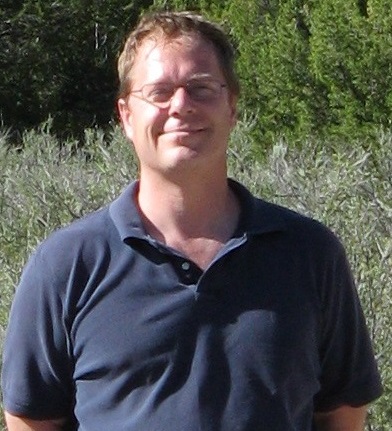 David Olson is a Regulatory Program Manager at the Headquarters office of the U.S. Army Corps of Engineers. He has worked for the Corps since 1991, beginning as a Regulatory Project Manager at the Baltimore District, evaluating permit applications for work in waters and wetlands. In 2002, he began working at his current position at Corps Headquarters. He manages the Corps' nationwide permit program and works on Endangered Species Act compliance. His other responsibilities include providing advice on applying wetland and stream mitigation policies and regulations. He is also developing an approach for cumulative effects analysis in the Corps' regulatory program.
David Olson is a Regulatory Program Manager at the Headquarters office of the U.S. Army Corps of Engineers. He has worked for the Corps since 1991, beginning as a Regulatory Project Manager at the Baltimore District, evaluating permit applications for work in waters and wetlands. In 2002, he began working at his current position at Corps Headquarters. He manages the Corps' nationwide permit program and works on Endangered Species Act compliance. His other responsibilities include providing advice on applying wetland and stream mitigation policies and regulations. He is also developing an approach for cumulative effects analysis in the Corps' regulatory program.
Please click only once on each video recording to view in this window.



